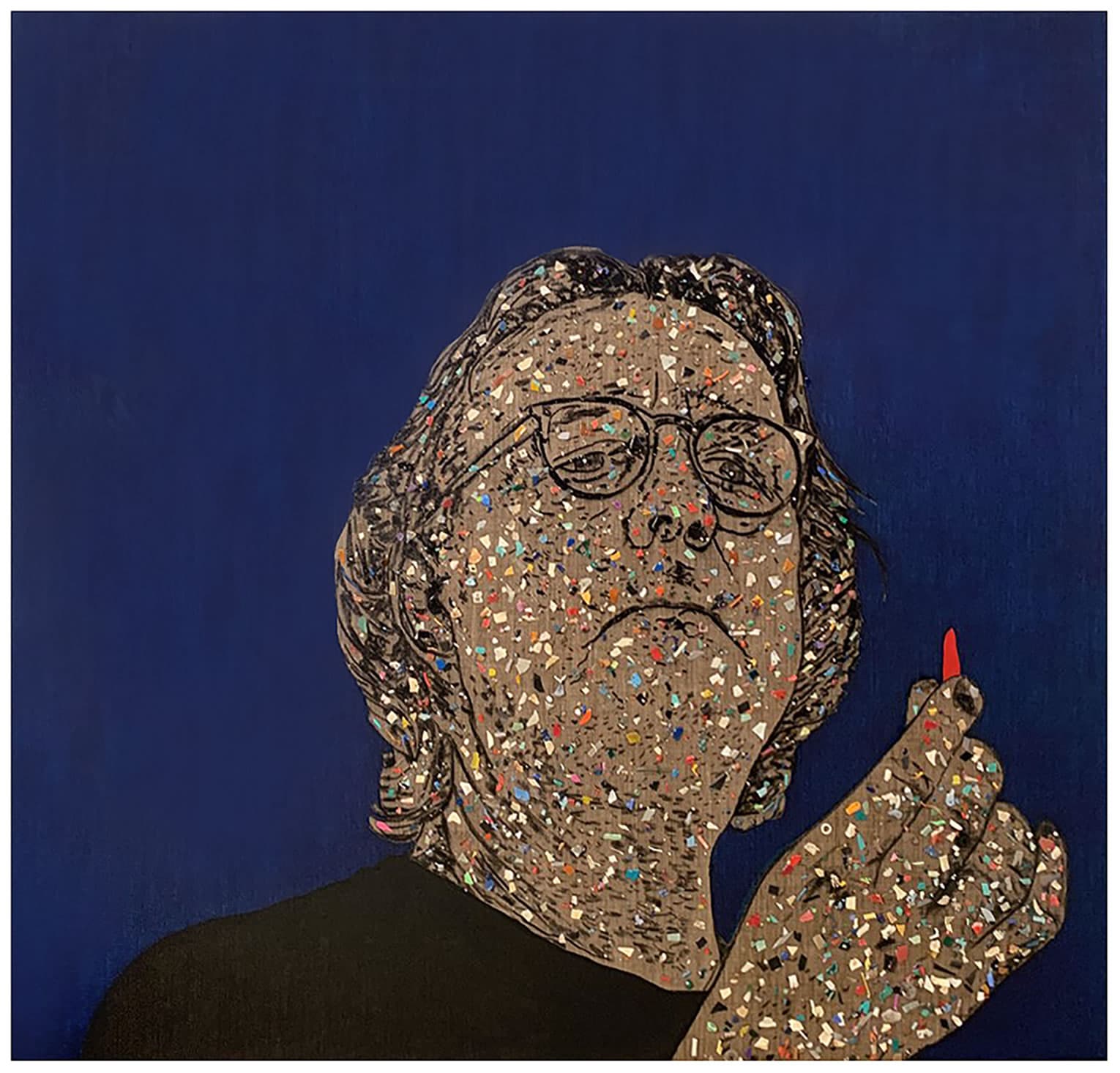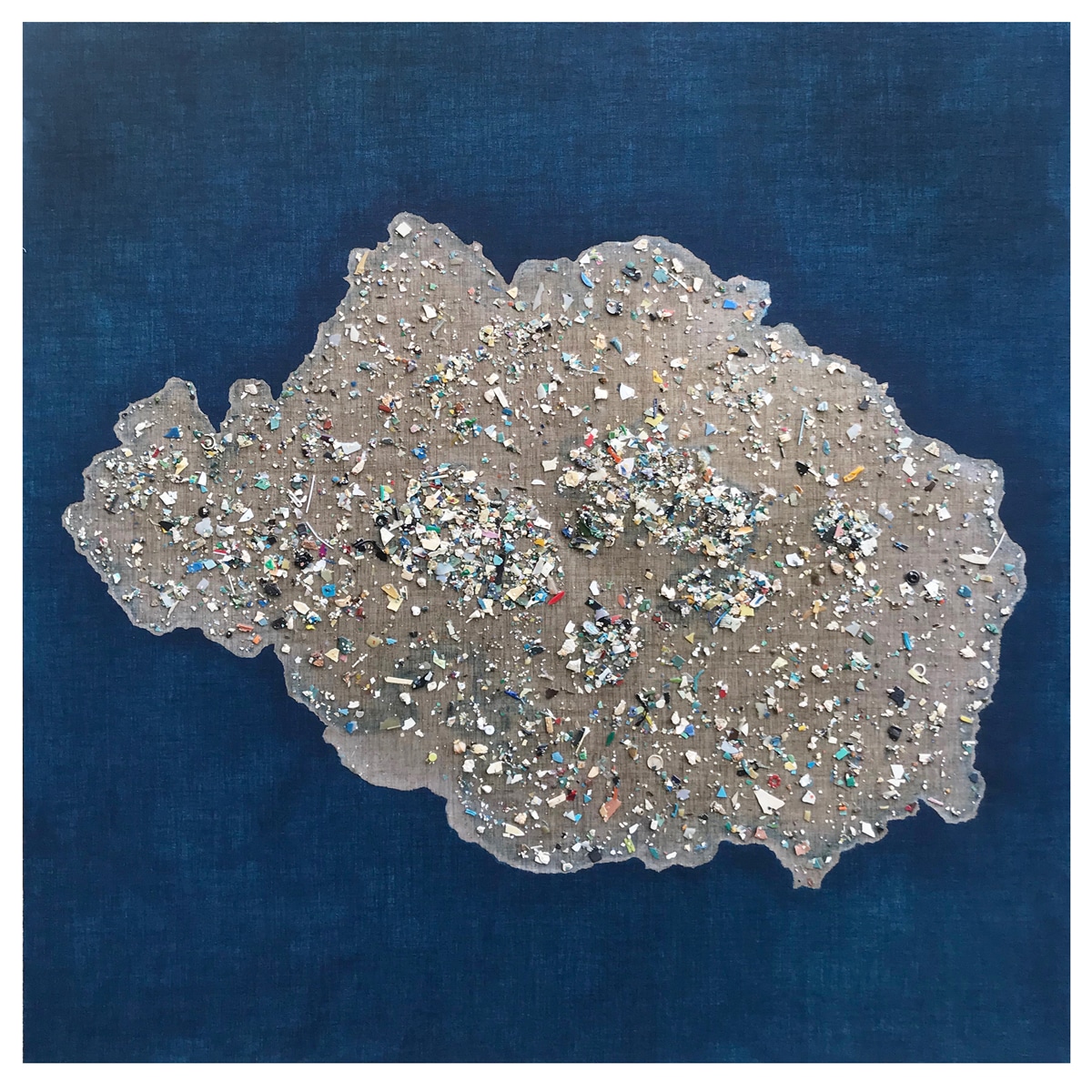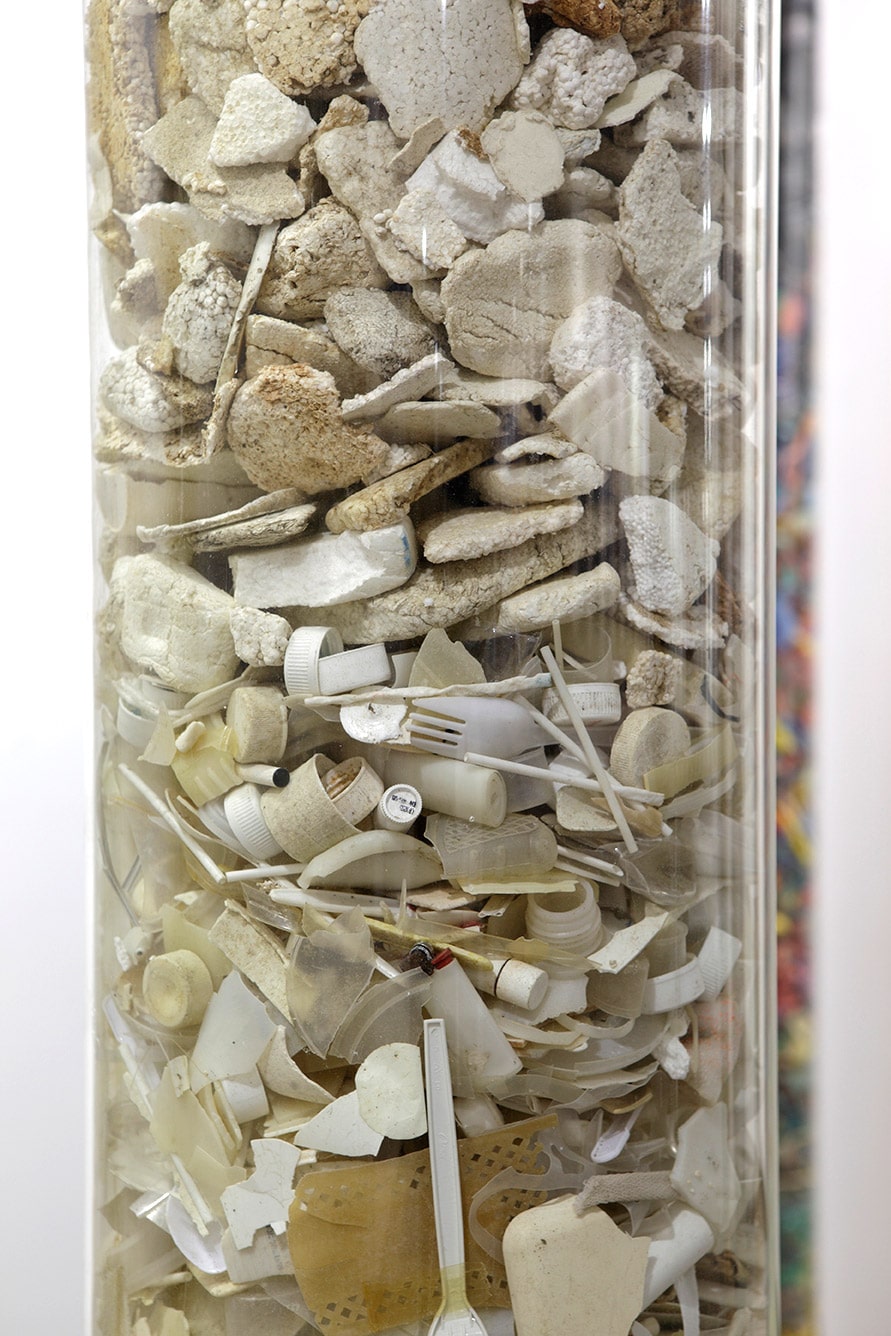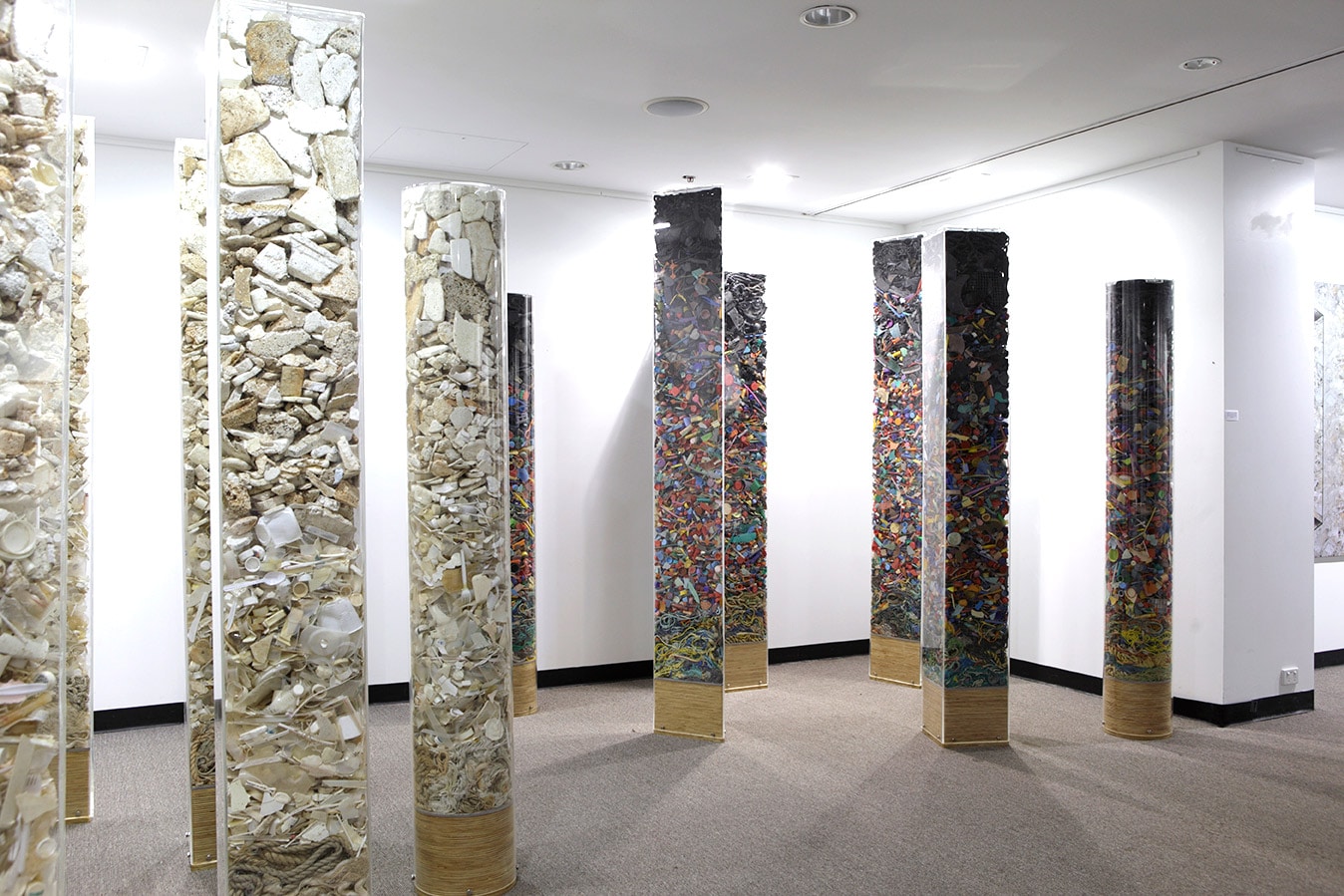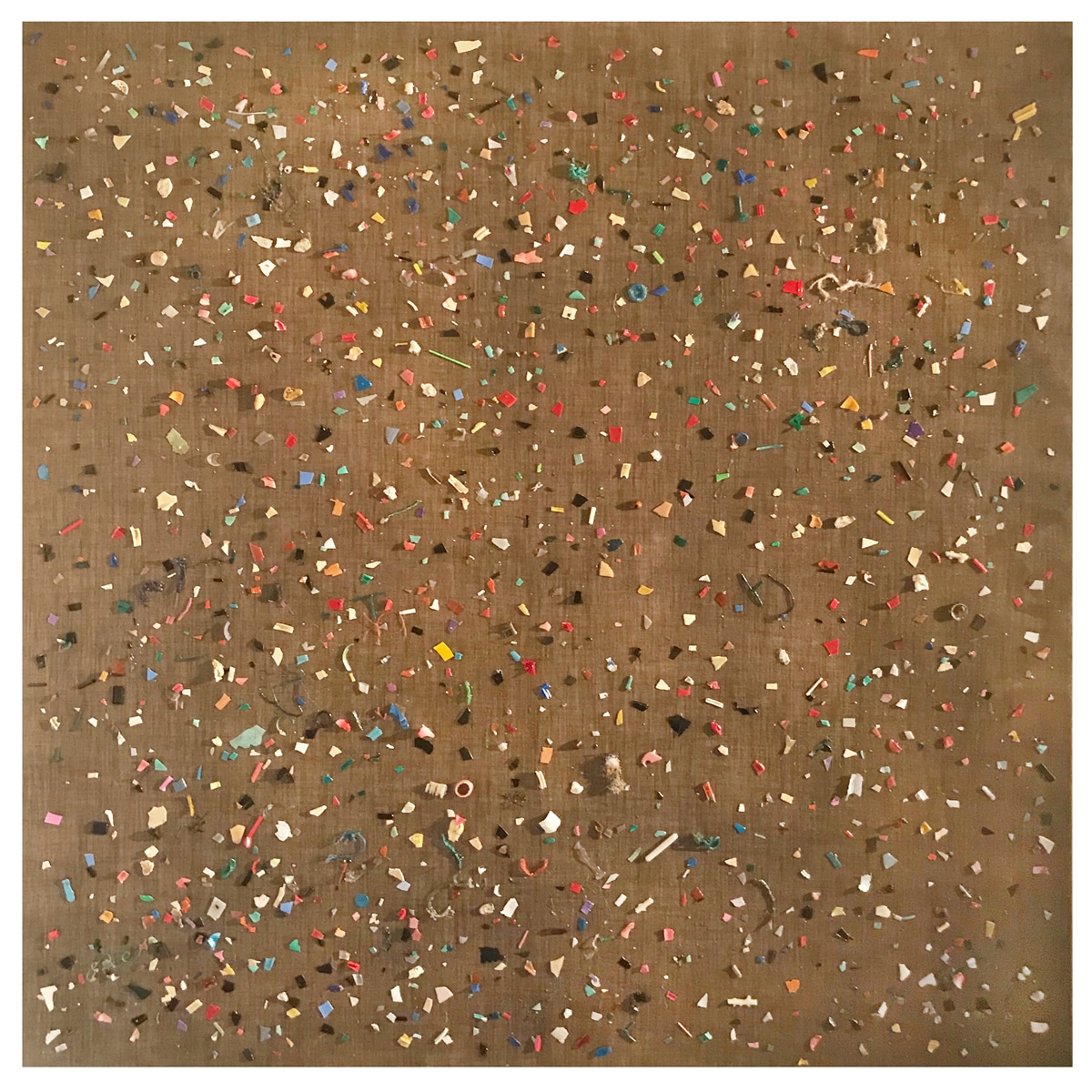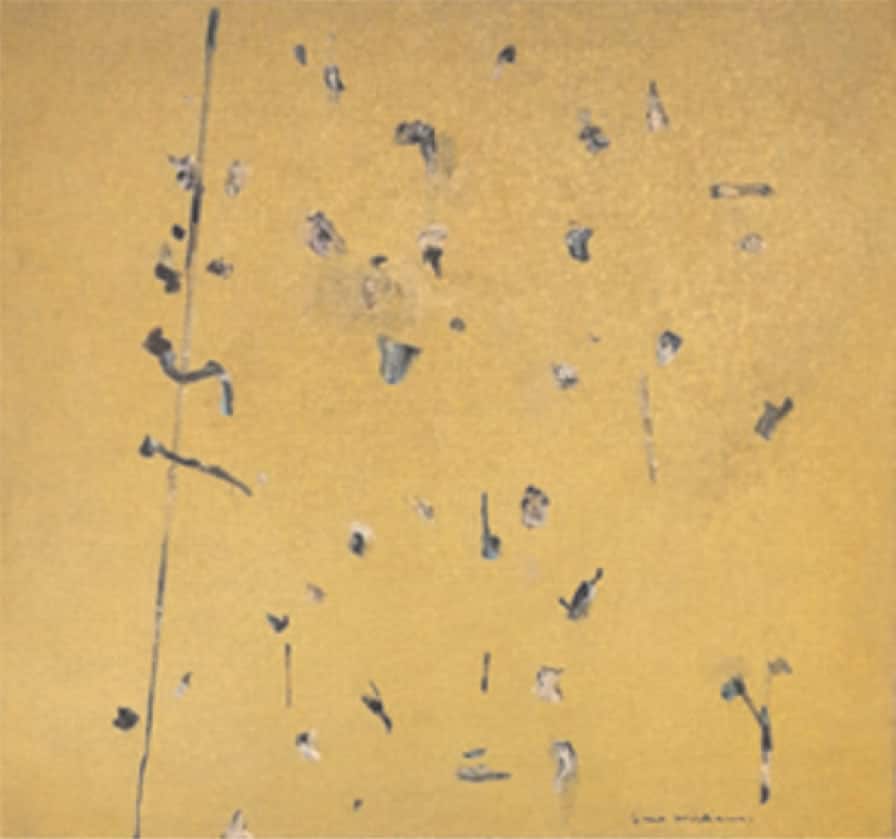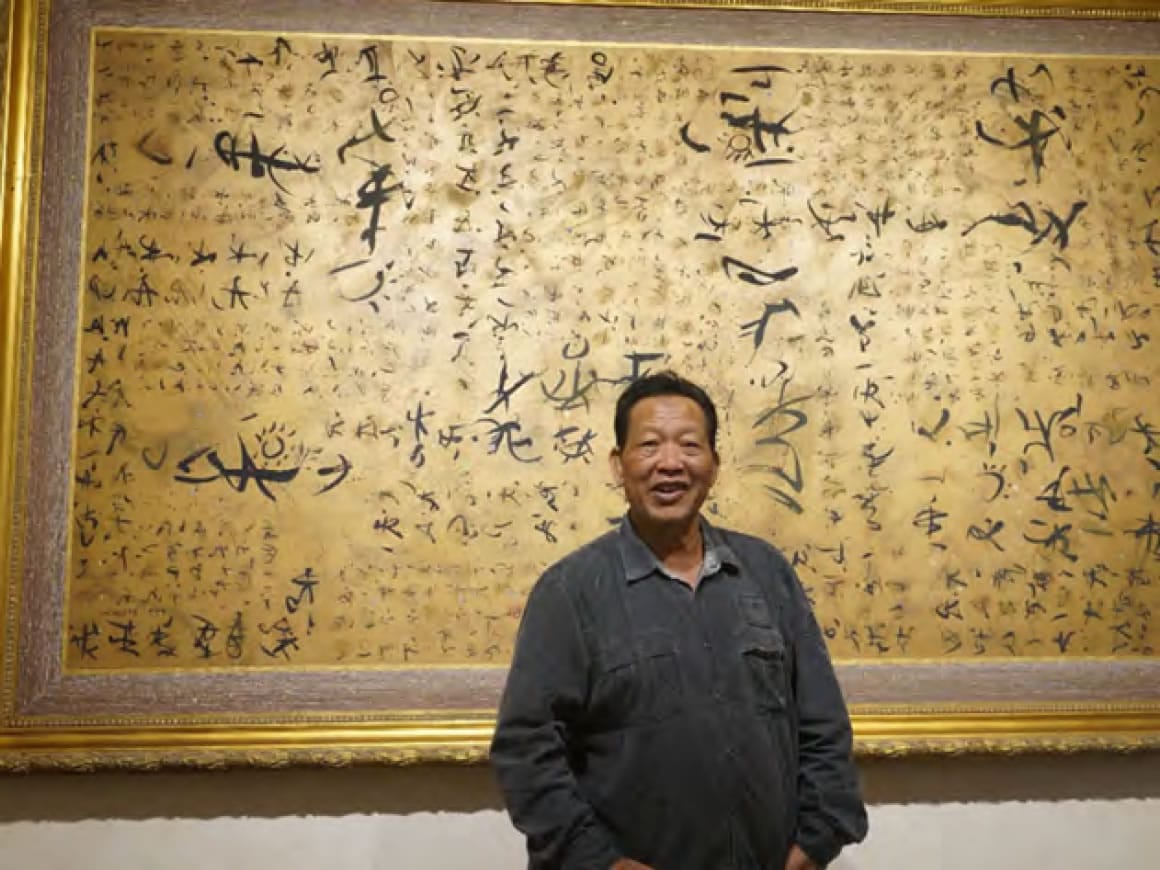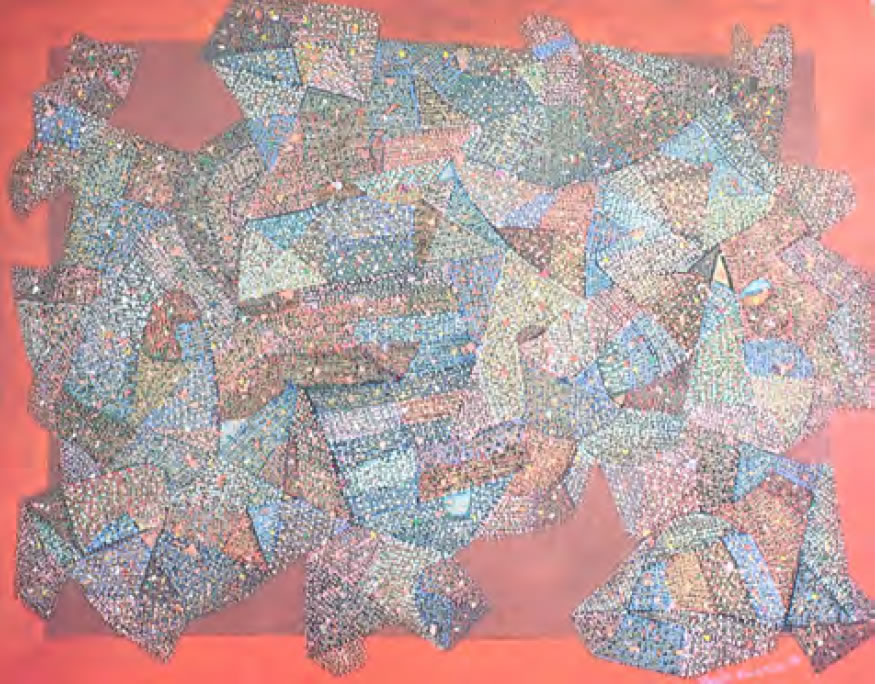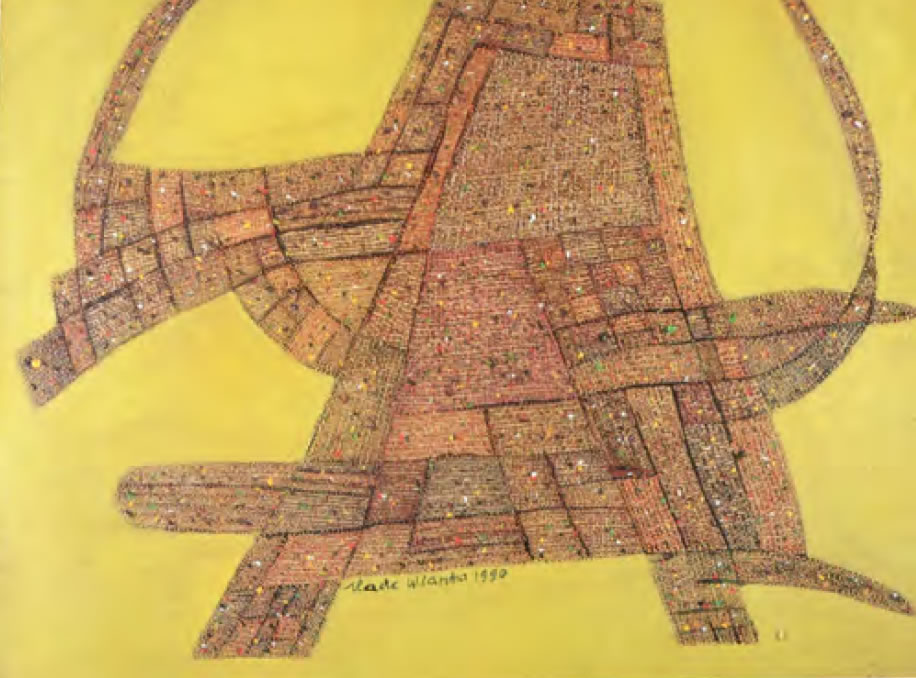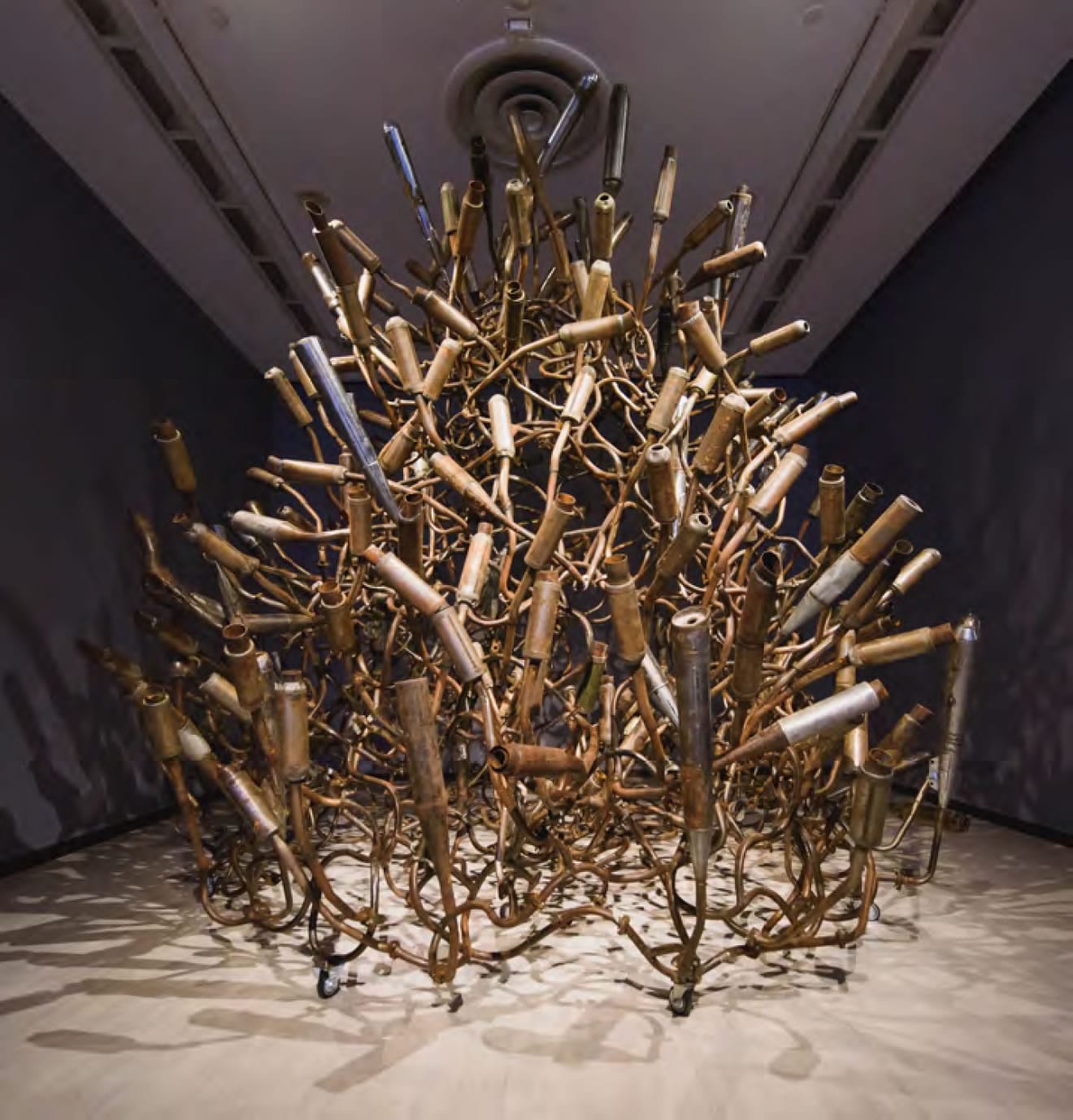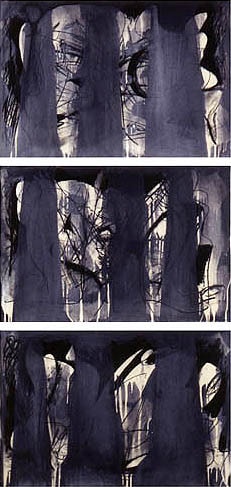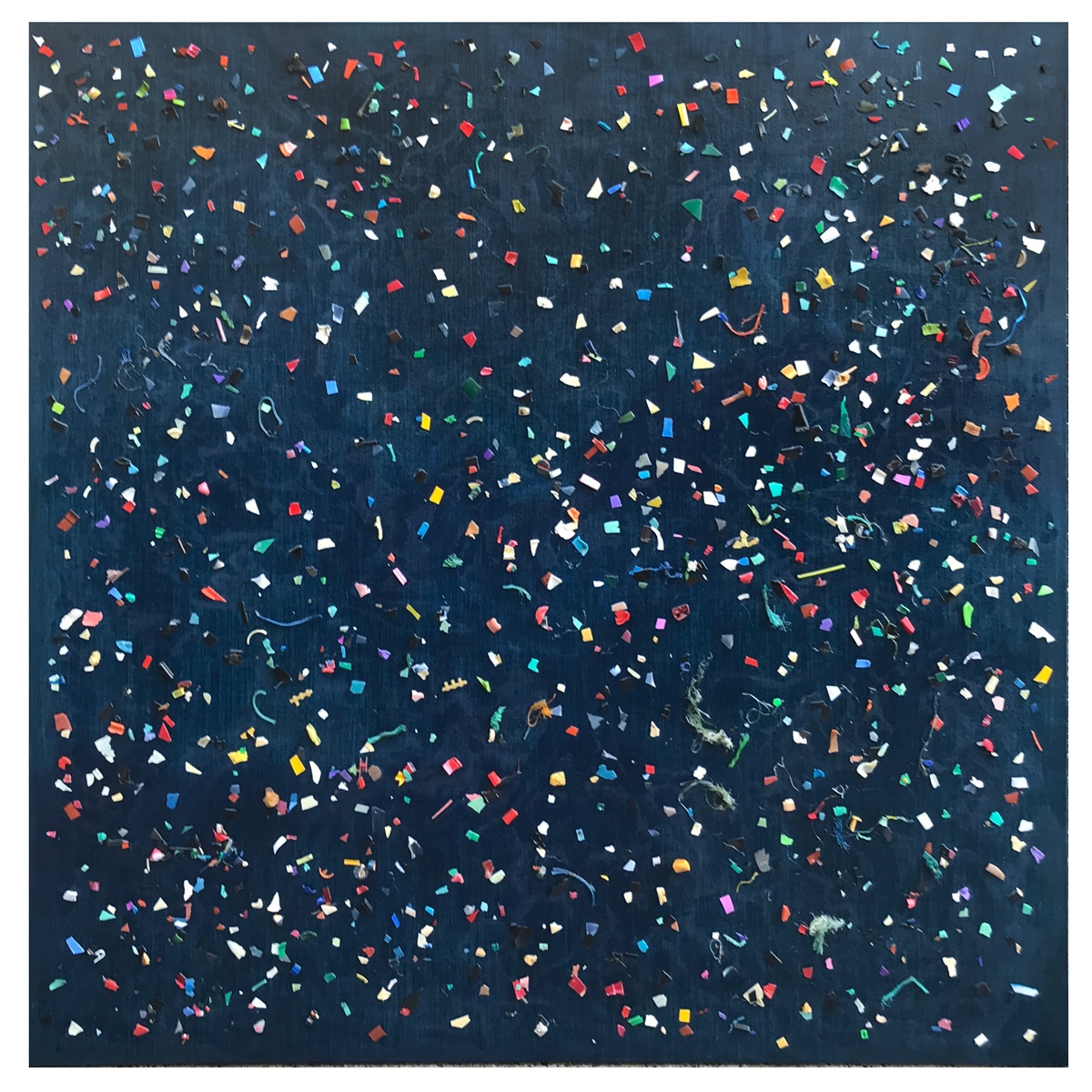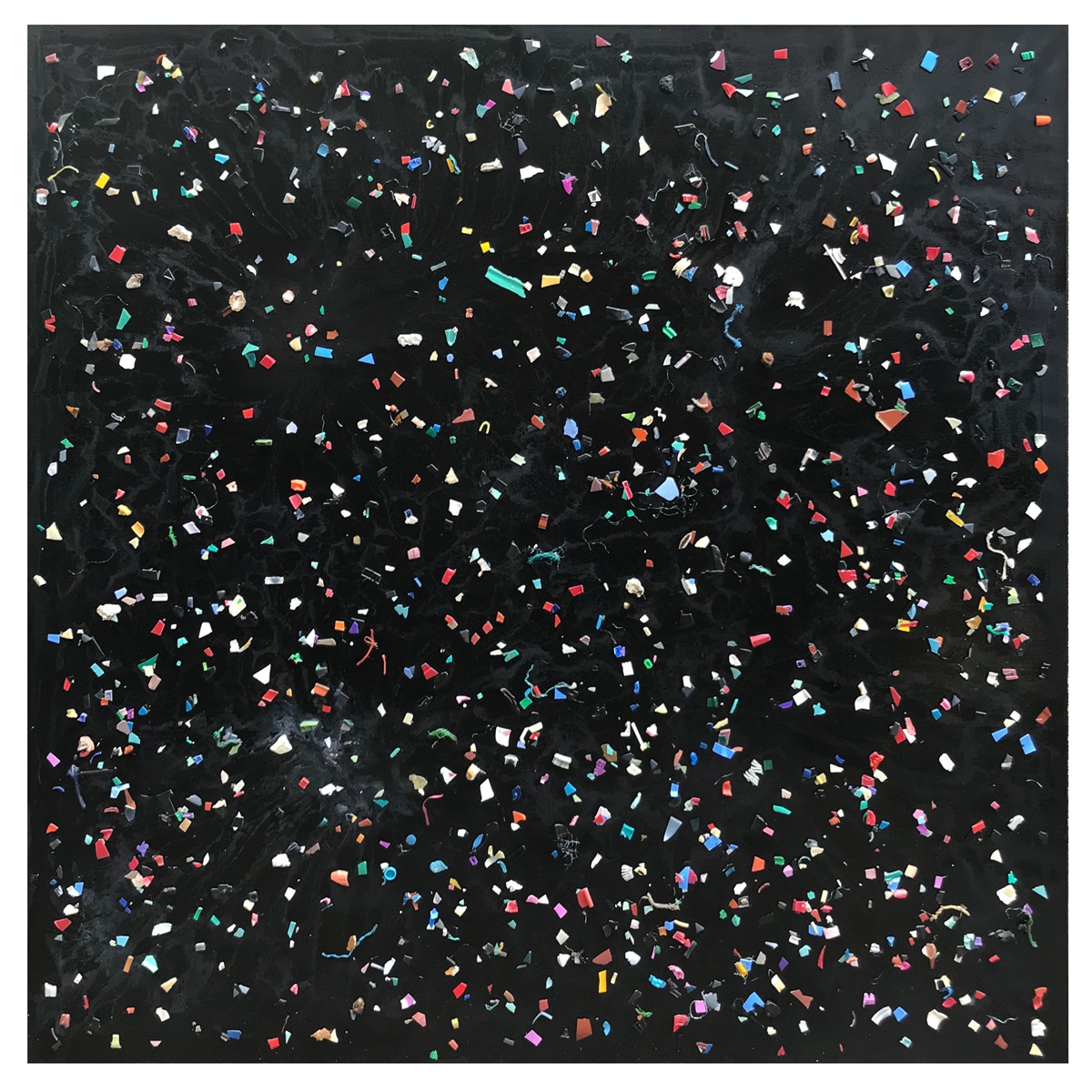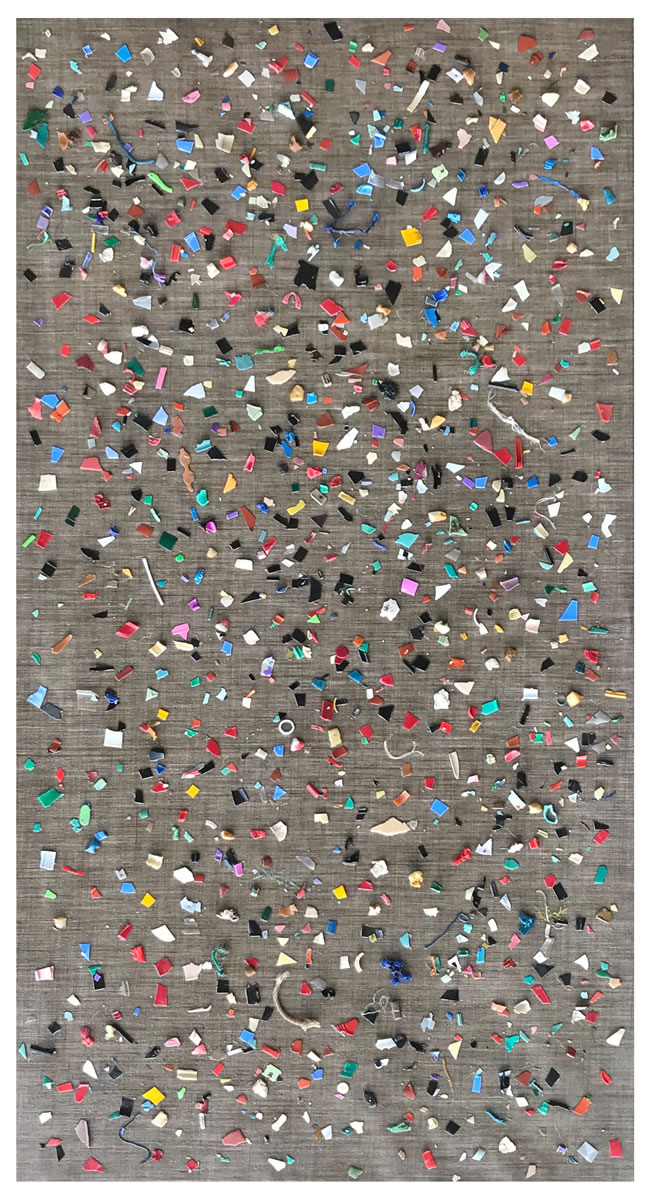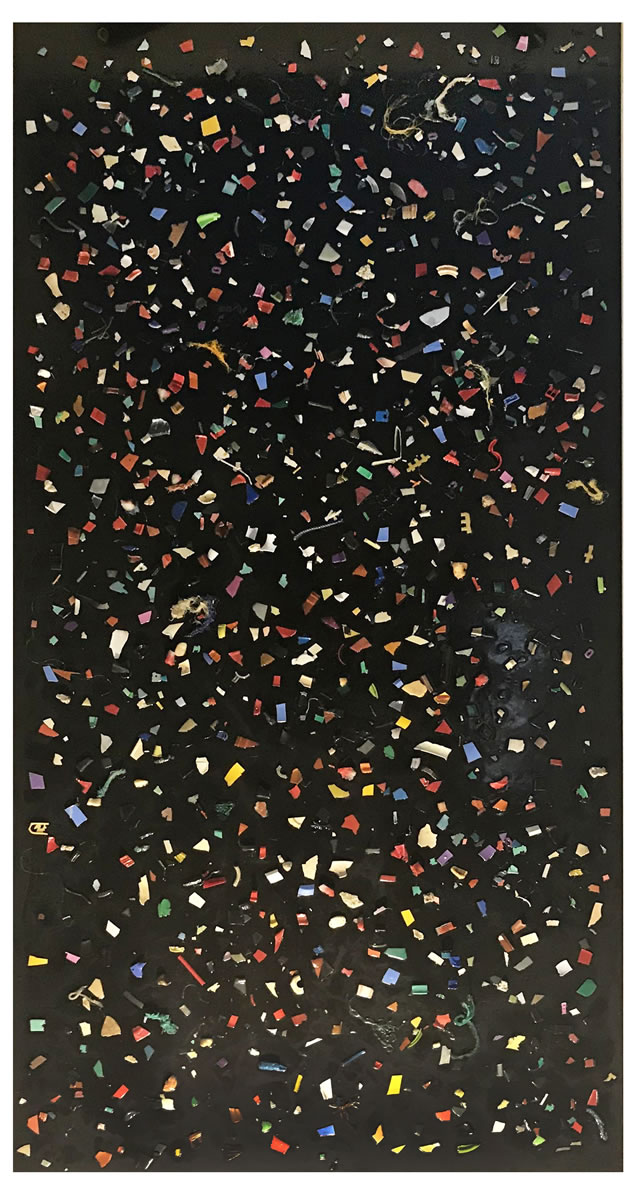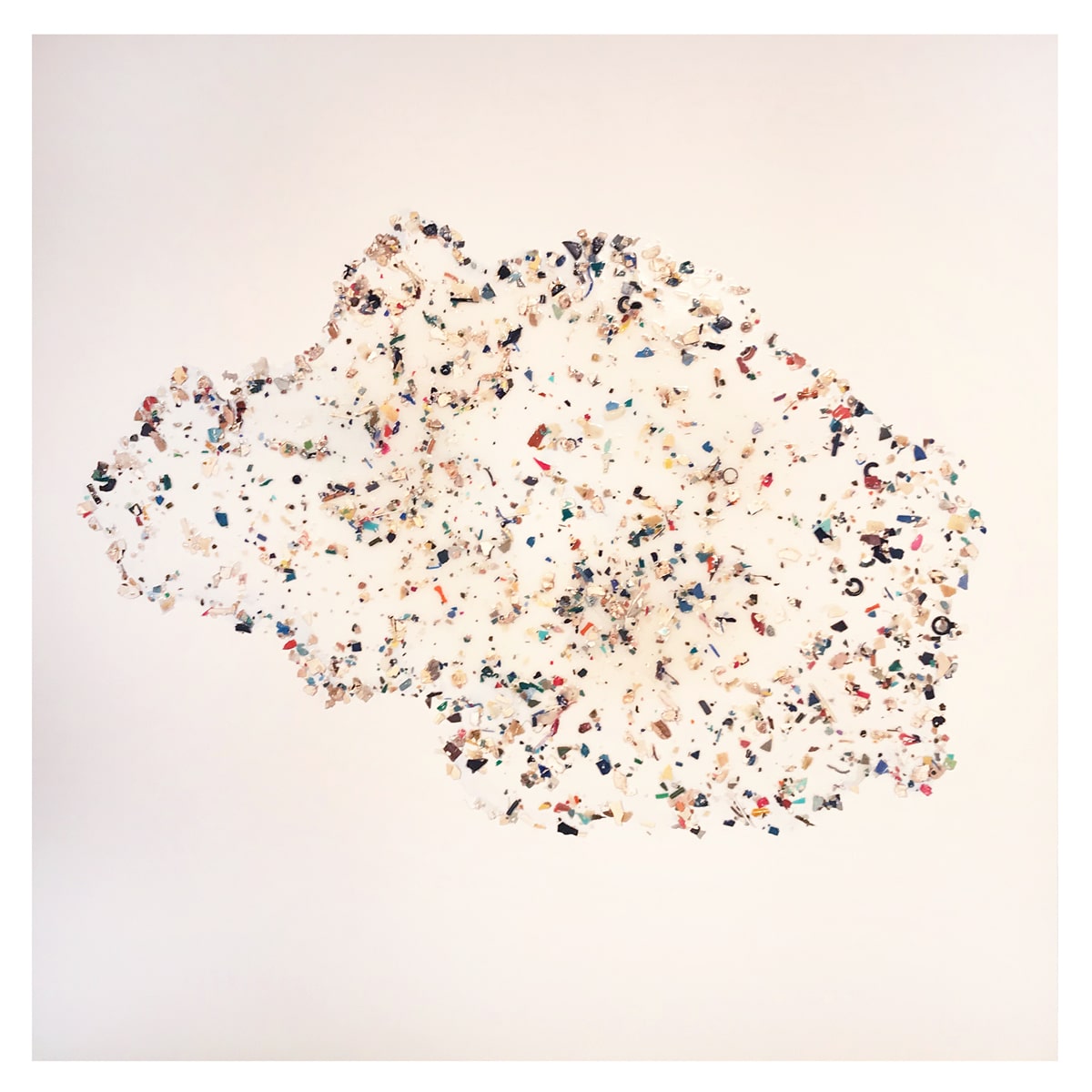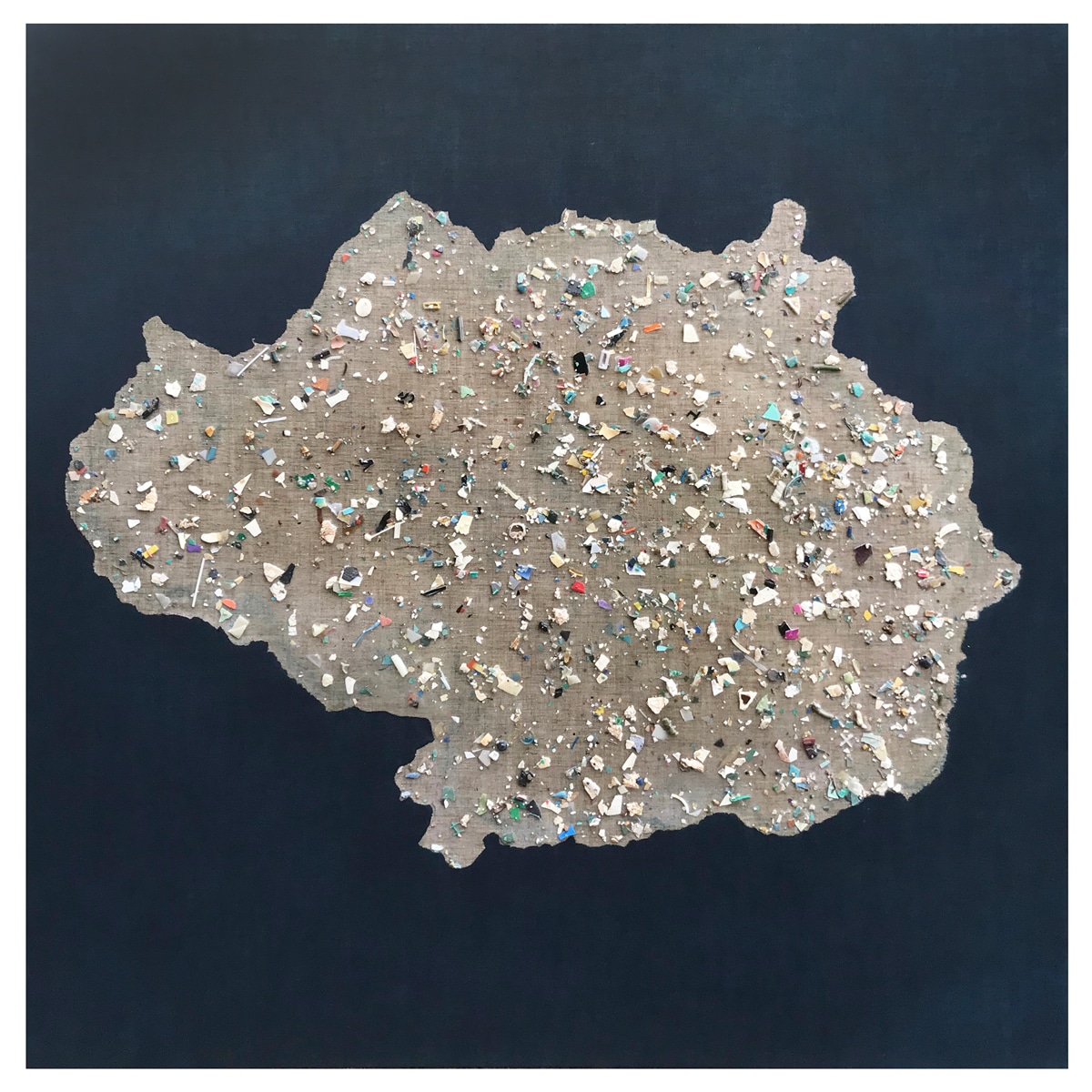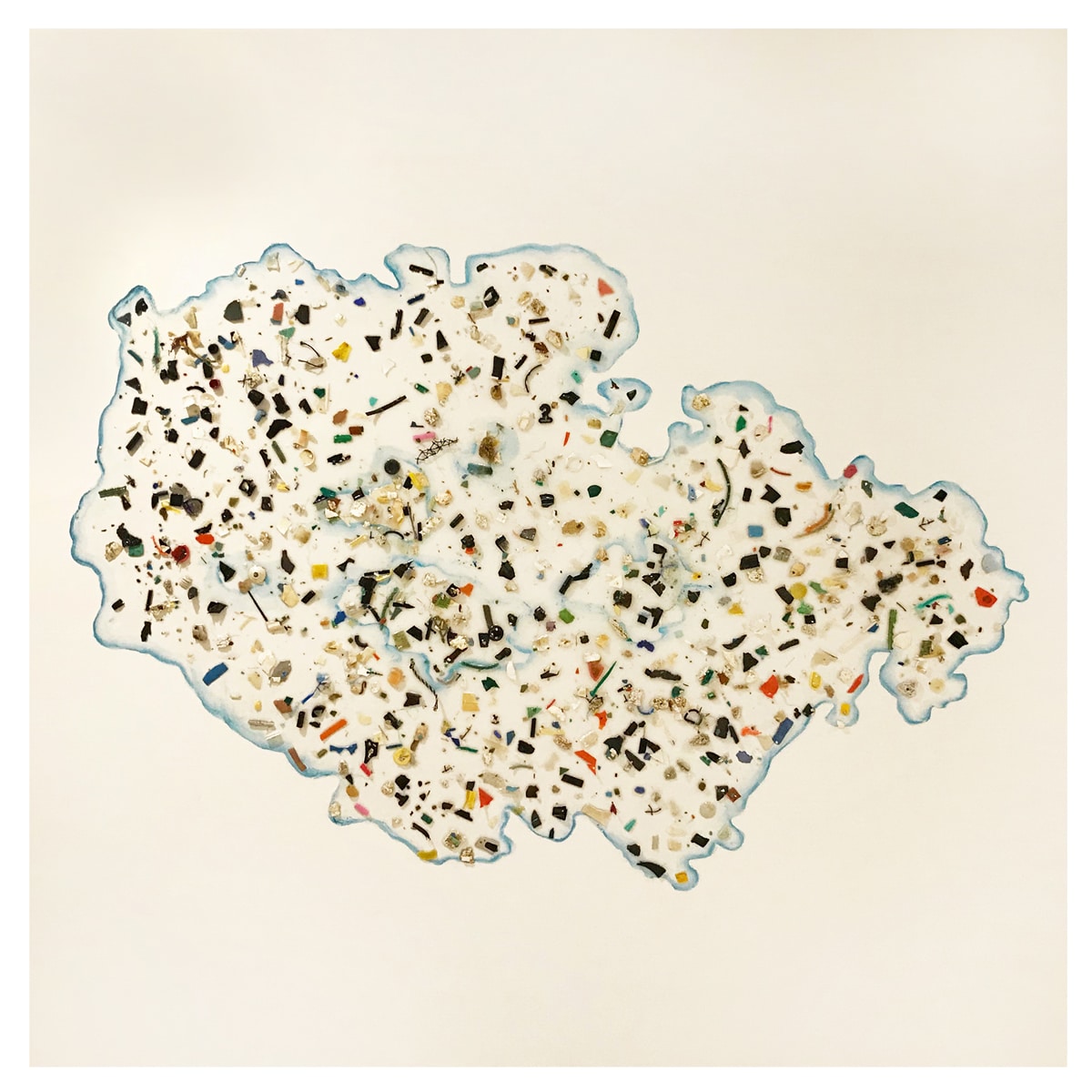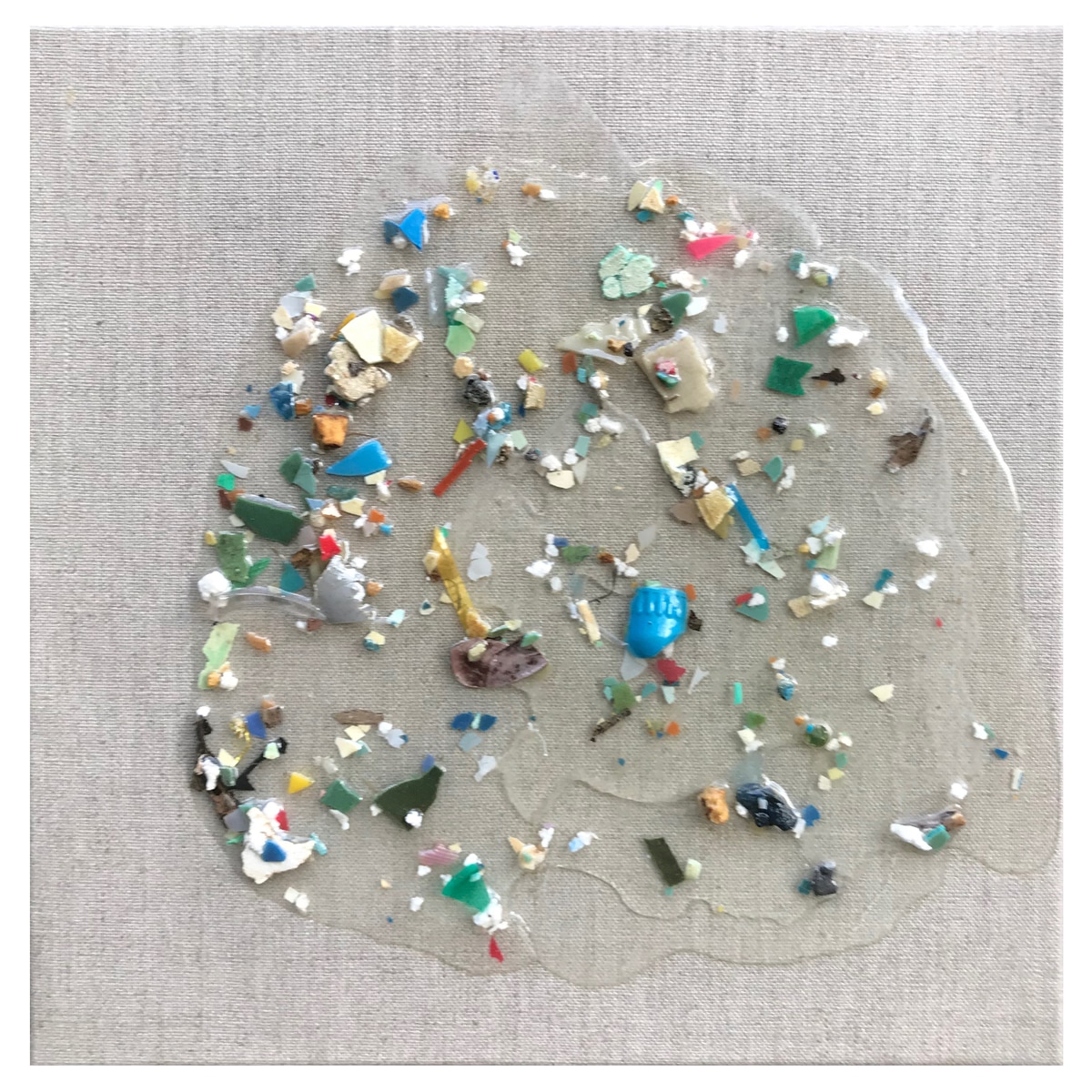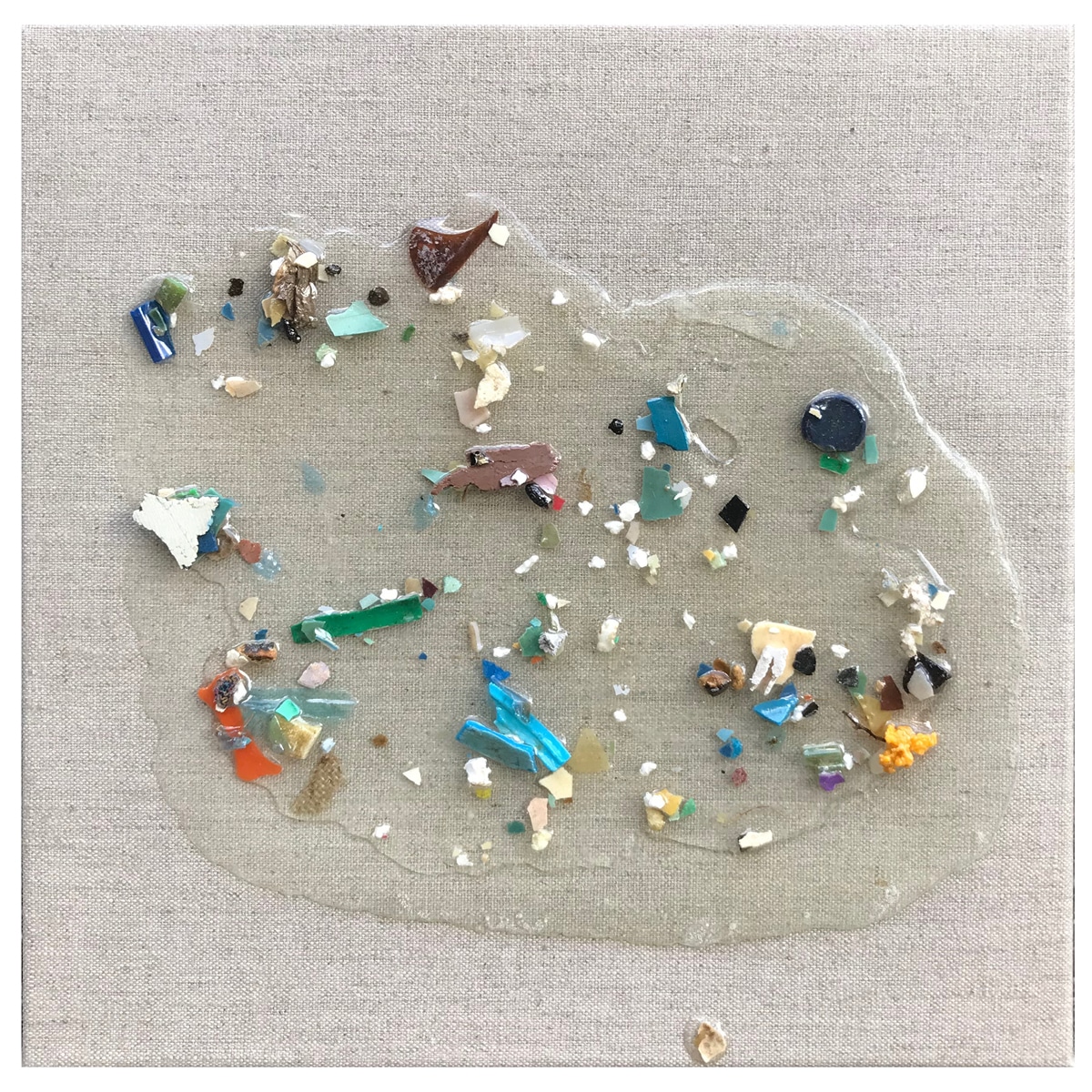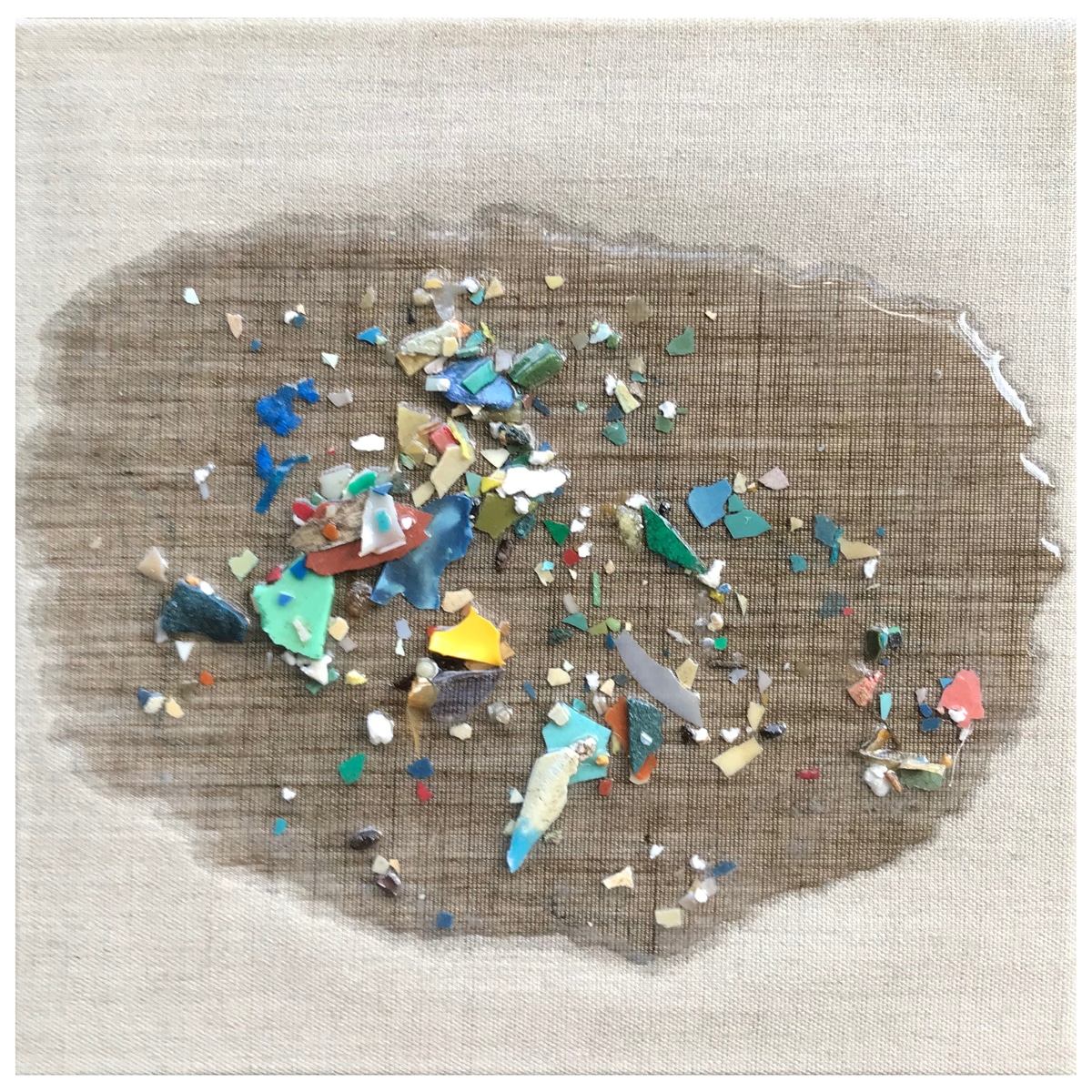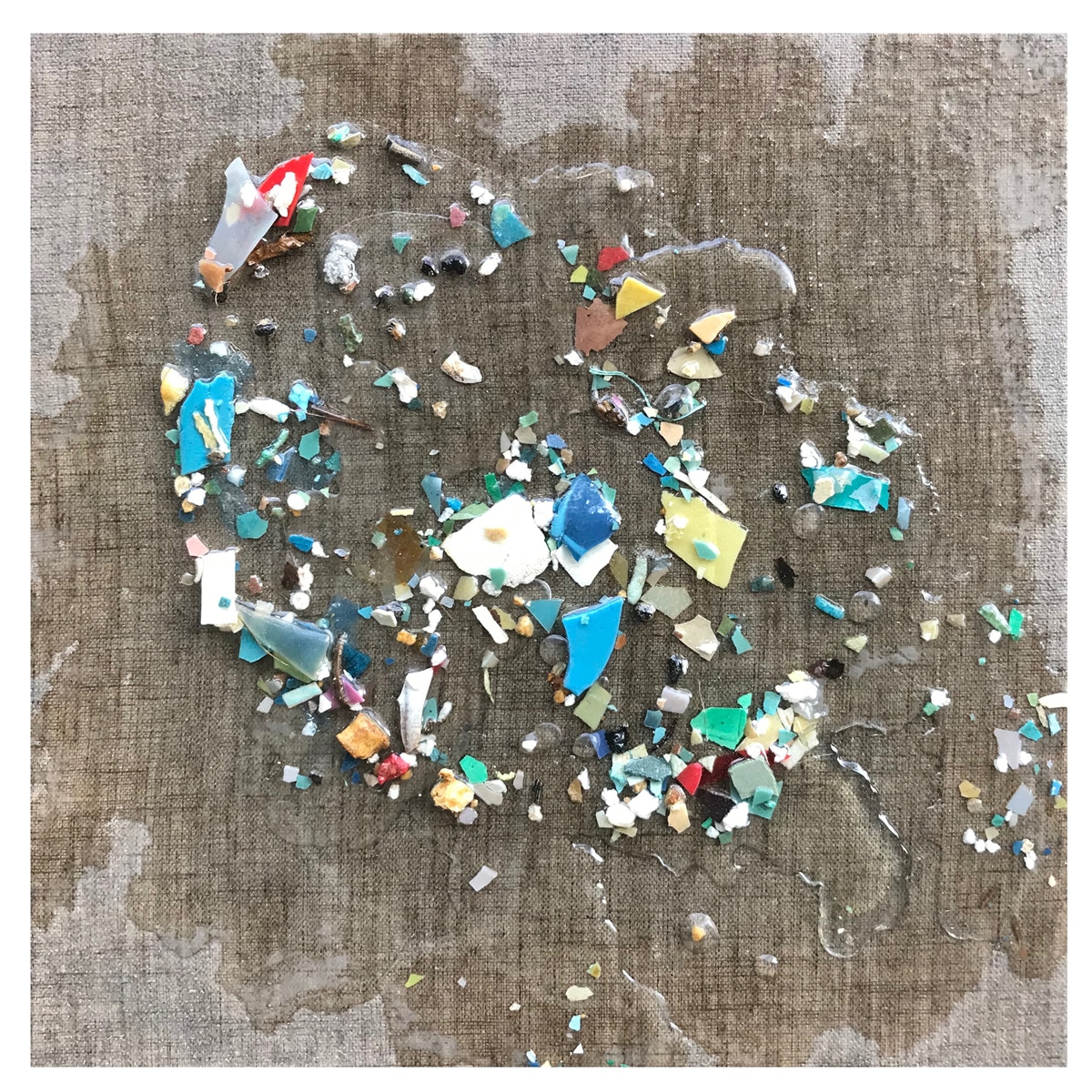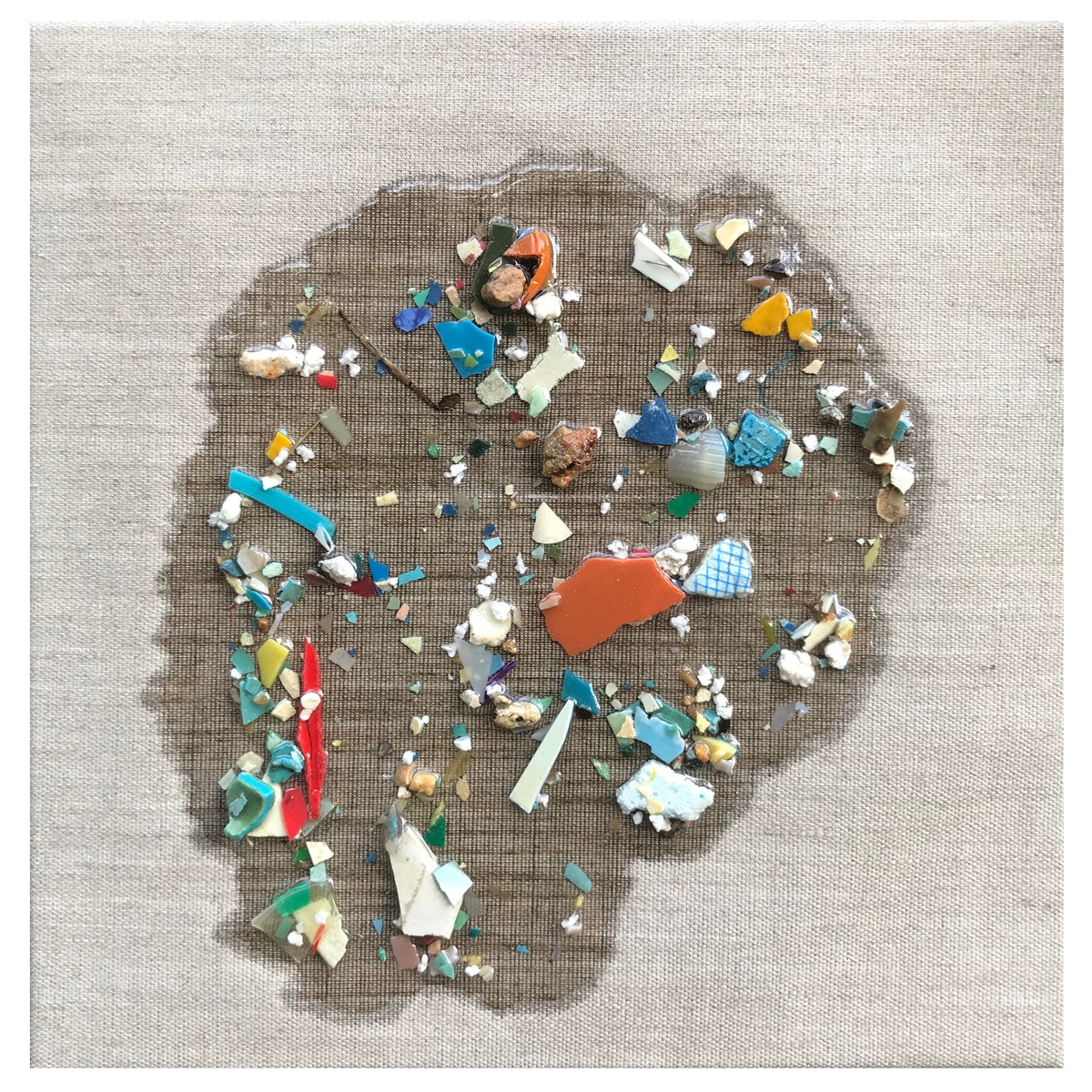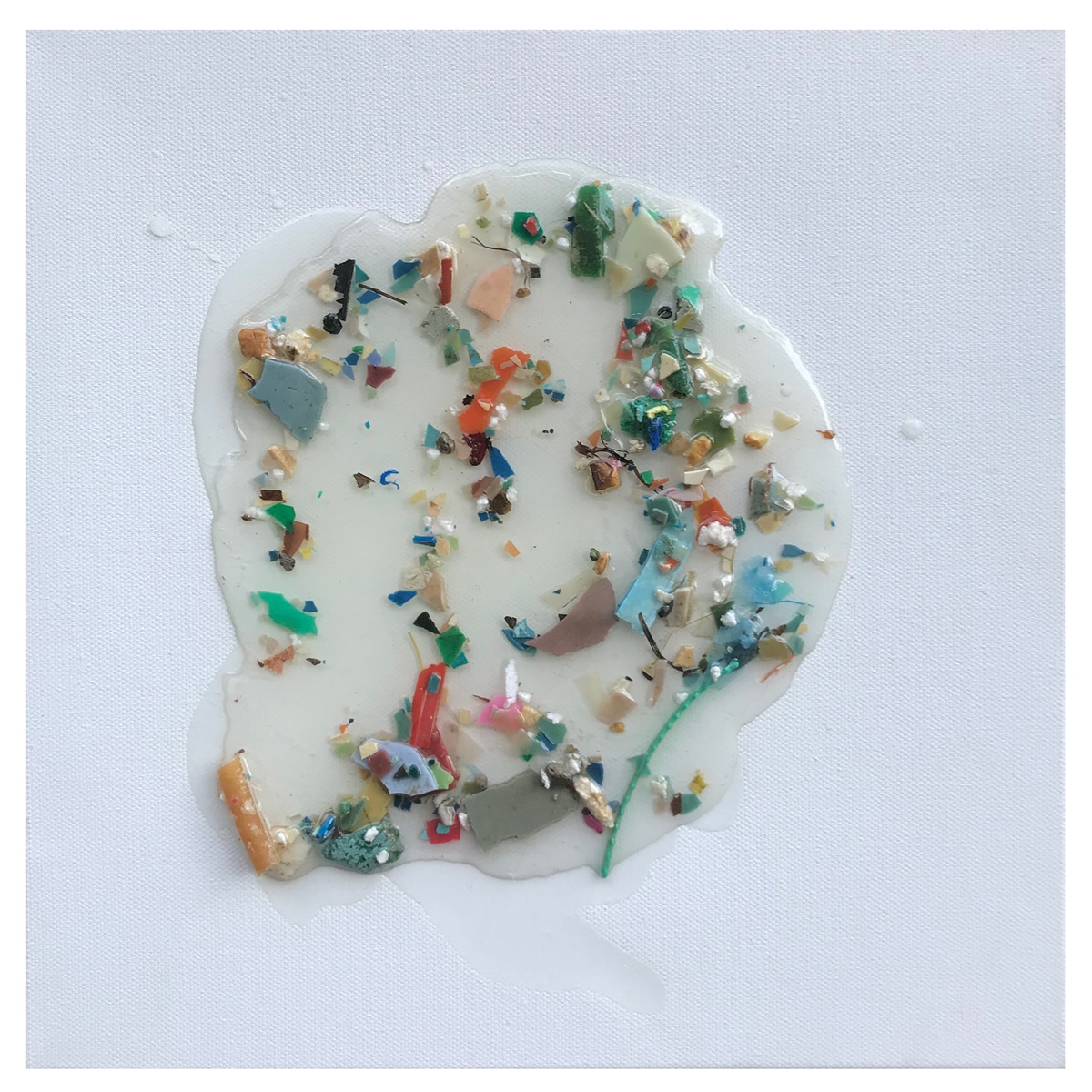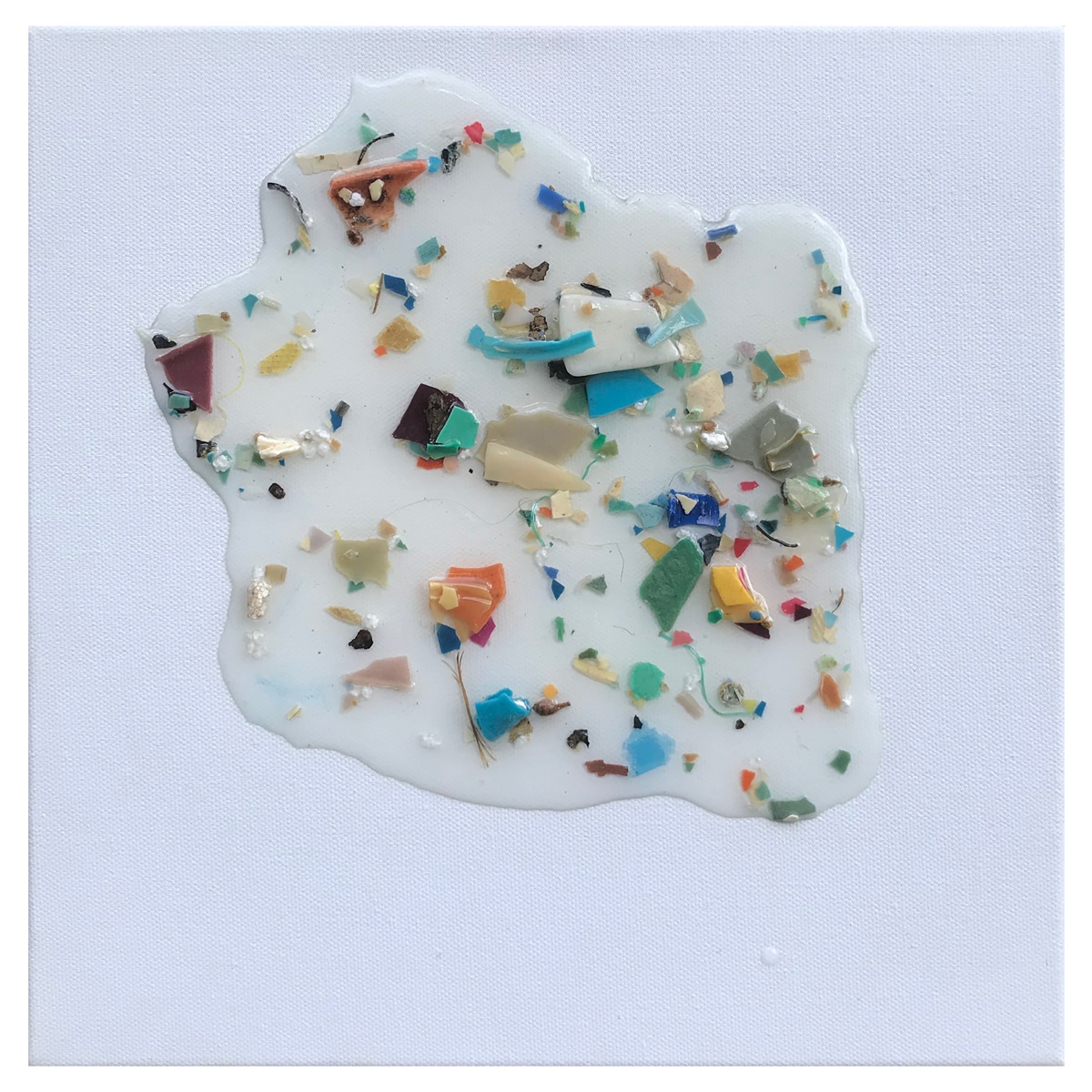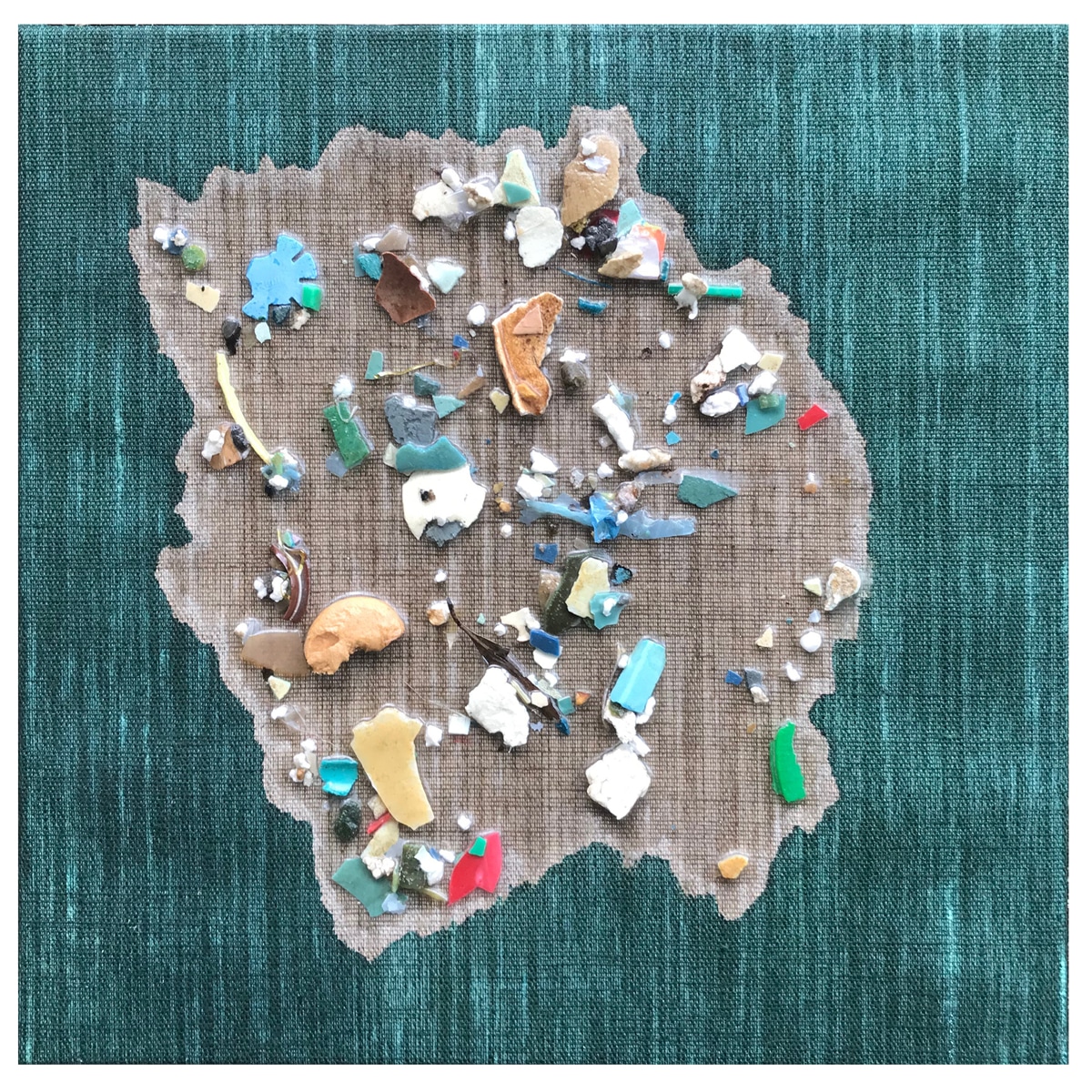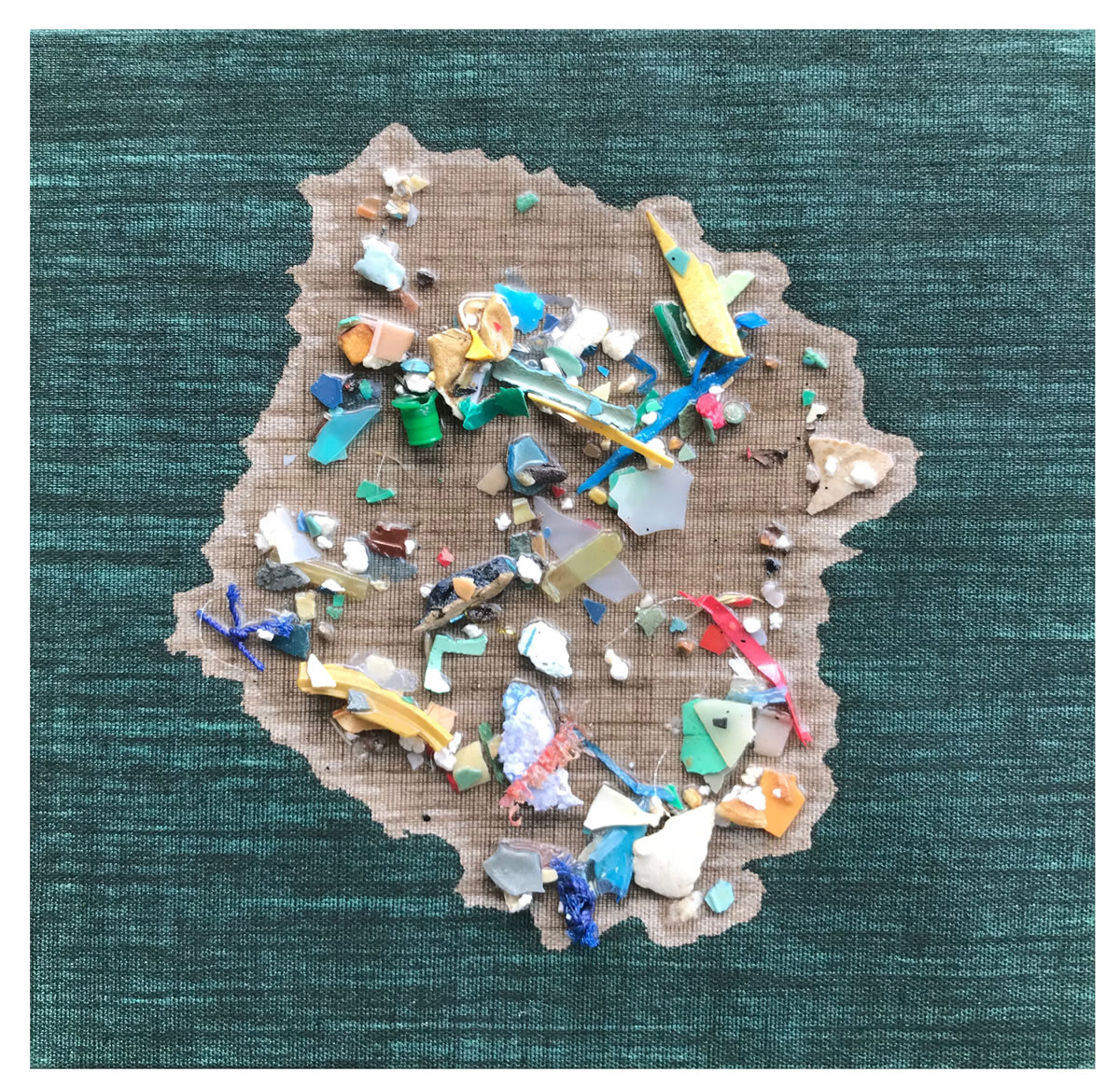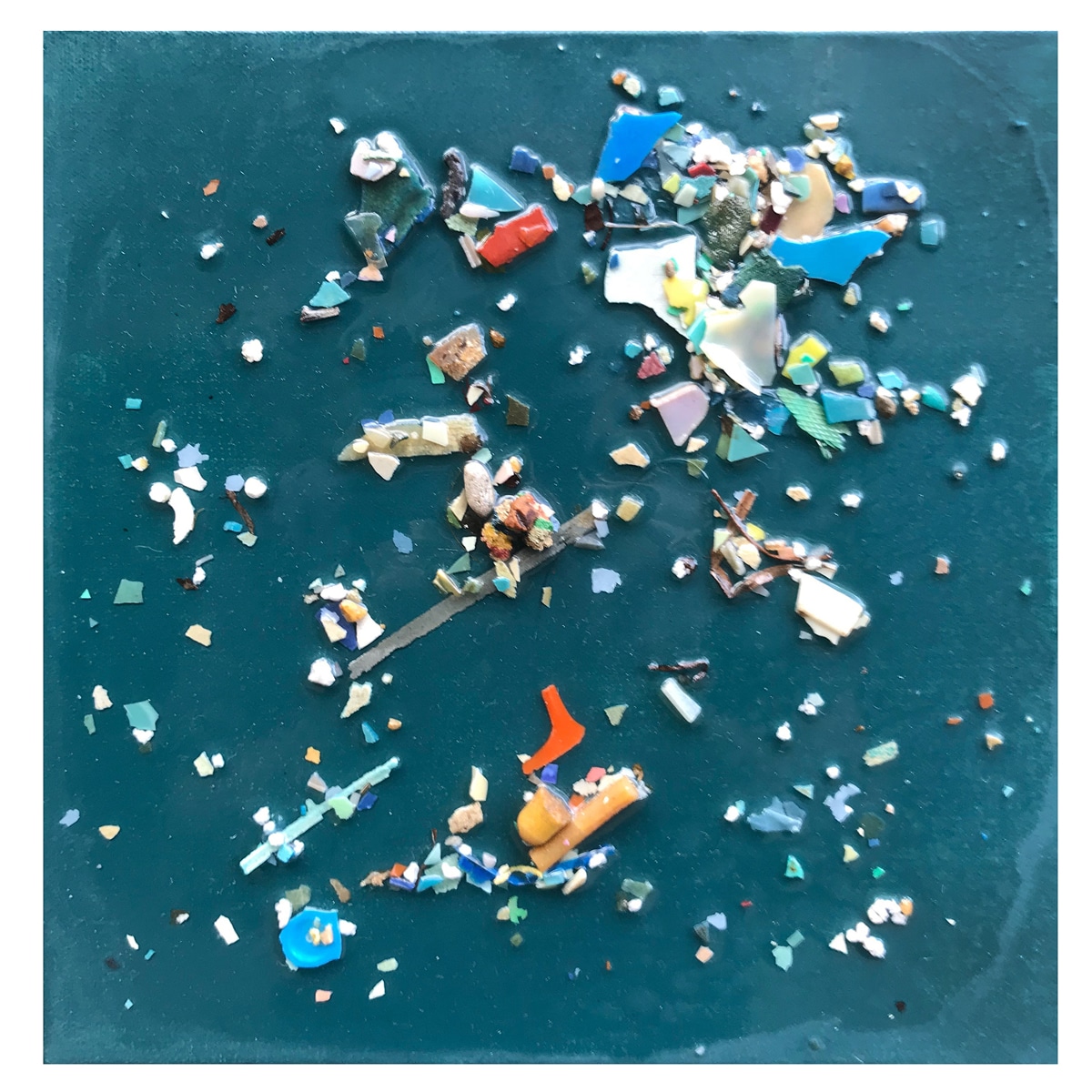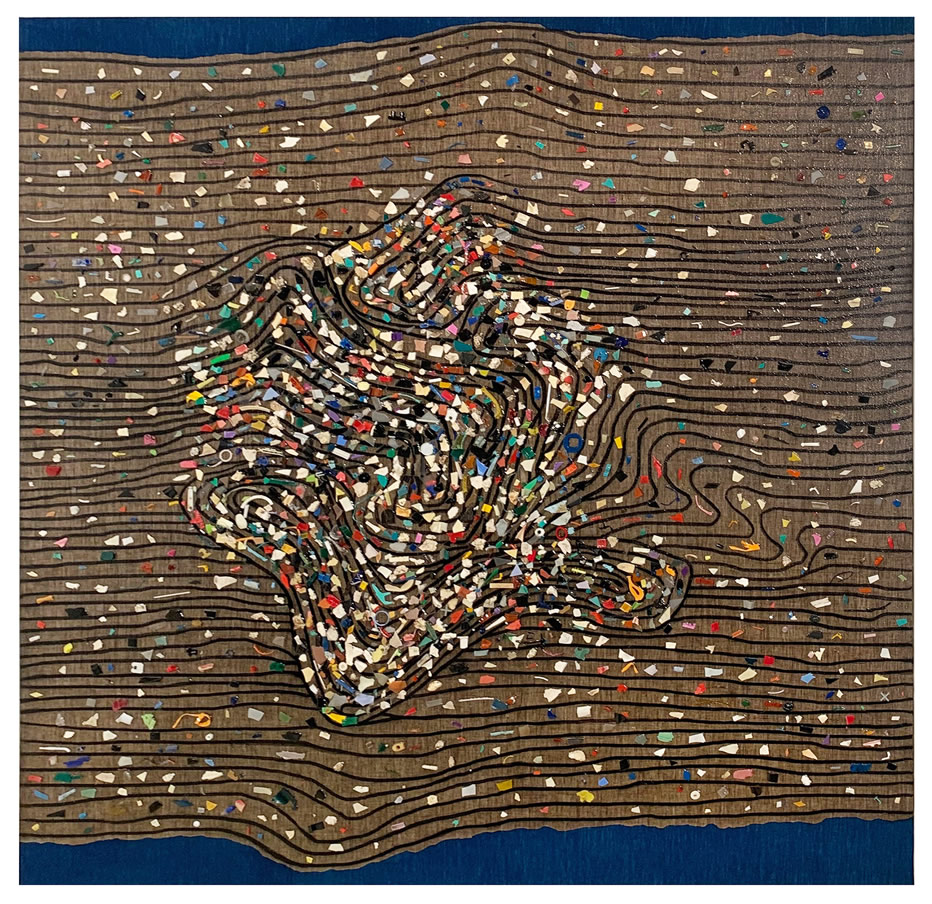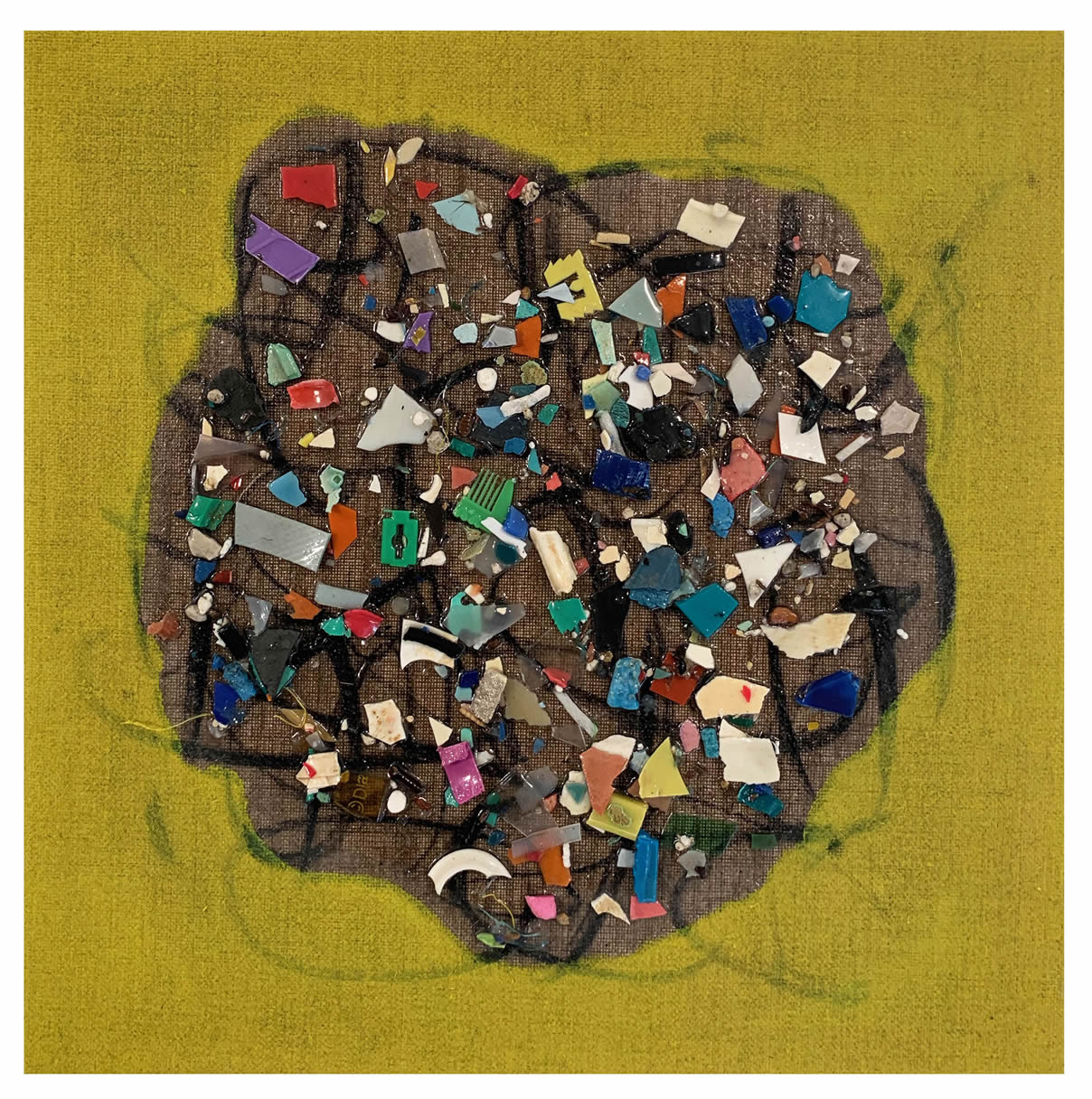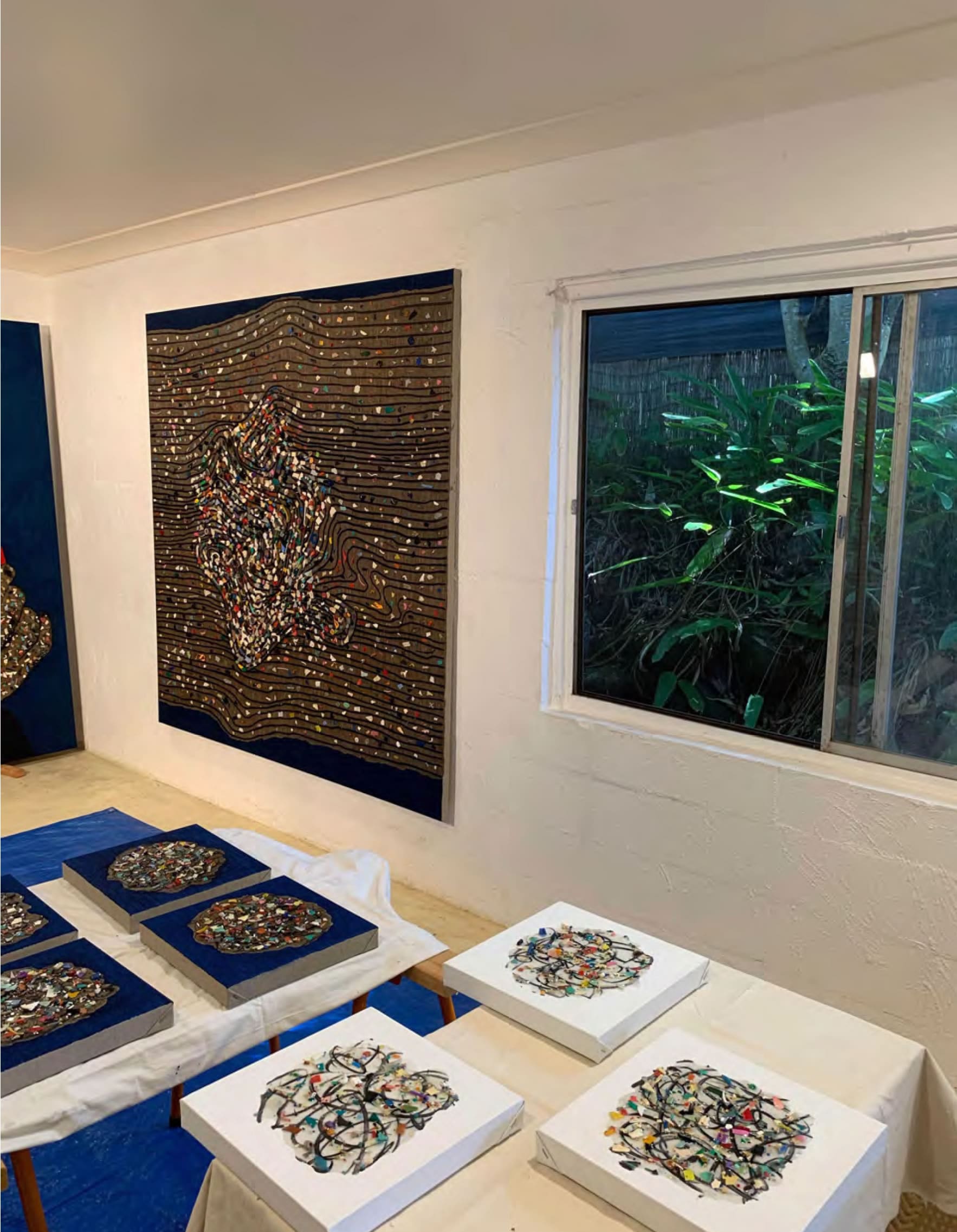‘TIDE LINE’ by John Dahlsen and Don Hill (3rd Edition)
About the Book
This is the second time John Dahlsen and Don Hill have collaborated on a project. The last was at a gallery in Brisbane City in 2002, although there were group showings prior. As time progressed so has their work and thoughts not only about their practices but also about the planet.
John focuses his attention at present, on small found micro-plastic objects that wash up on the beaches of Australia and the Detritus that is now accumulating in the Pacific Vortex. ‘The Garbage Patch’. From Satellite images come his creations of the “Garbage Patch Series” and resonate in the Beauty of the “Detail Beach Series”
The two artists share a synergy with their recent artworks forming a balanced activist and aesthetic statement.
Don has been collecting data and images for over thirty years of the micro landscapes that present themselves in nature globally. In 2015 he had an epiphany on his arrival at Bruce Bay in the South Island of New Zealand.
‘The Bay that is no More’.
Don Hill states, “Most of the time I don’t take too much notice of what is happening as a result of our interference with nature, but this shook me’. In 2020 Bruce Bay no longer exists as it was and is completely unrecognisable today.
The phenomena that were the beautiful sculptures are gone becoming part of a sea wall that protects a new road with caravans selling Barista made coffee”.
This epiphany was akin to John’s moment of artistic awakening when he first discovered plastics washing up on beaches in the mid-nineties and as a result of that encounter, began to make assemblages and sculptures from his beach found plastic collections.
Don continues, “Originally I wanted to become a War Artist with involvement with the Australian Army in Timor, but now it is a different war. One to preserve what we have and to defeat the stroke of the pen that makes the sword swing on Nature.
Don has with these current works attempted to depict and explain nature in a positive way, not to provoke, and to people who have not been as fortunate as he has been in visiting these places, or fallen victim to the charm of the sea when something is occurring or has occurred. These works encompass calm, violent and rough seas and convey the harmony of nature.
Both artists here express an edge along which they exist, of beauty with their respective creations with their individual aesthetics, alongside a deep sense of activism with their environmentally incisive statements embedded in the works.
John Dahlsen and Don Hill 2020

Title: Self Portrait with Unintended Ingested Micro Plastics 2020
Materials: Ink, charcoal, found micro-plastics and plant-based resin on Belgian linen.
Size: 183 cm x 198 cm.
Date: 2020
Description:
Apparently, we ingest the equivalent of a teaspoon of micro plastics each week according to a recent report from the ABC posted 12th June 2019. The report by Ben Millington from ABC Newcastle, stated that we could be ingesting approximately a teaspoon of microplastics each week. It cites a new study commissioned by the World-Wide Fund for Nature which was carried out by the micro plastics research team at the University of Newcastle in Australia. This unintended consumption is the equivalent of eating the same amount as is found in a credit card every week. The report was created by a collation of fifty international research papers which attempted to deliver an accurate calculation of ingestion rates. It asserted: “It found based on “conservative assumptions” that people are consuming about 2,000 tiny pieces of plastic each week. The study focused on microplastic less than 1mm in size, which are the most commonly ingested contaminants.
Sourced from Google Search 12th June 2020:
John Dahlsen
Painting with an Environmental Palette
John Dahlsen
I am a contemporary environmental artist, author and university art educator whose work examines the passage of time in landscape and the place of humankind within it. I work with found objects, primarily plastic ocean litter, to create semiabstract compositions. My work is multi-disciplinary and includes assemblage, sculpture, installation, painting and printmaking.
Over twenty years ago, dating back to 1998 and 1999, I made my first assemblage work titled “Contemporary Landscapes” from beach-found plastics. I used recycled materials to convey the history and memory of a place, to comment on the human experience of place and the beauty and degradation of the environment. And as I evolved as an artist, these elements have deepened and become more sophisticated through both my studio based work and my own research as a practicing visual environmental artist.
I am based in Byron Bay, Australia where I have lived for close to thirty years. I was originally born in Sydney, Australia and spent my childhood growing up in East Gippsland in Victoria, Australia. After moving to Byron Bay in the early nineties. I lived in a beautiful home that had lime-washed ceilings and walls. This fascinated me because it reminded me of the driftwood that I used to collect and work with when I was in art school at the Victorian College of the Arts in Melbourne. I thought at the time: ‘I want to go back and collect driftwood from those remote beaches of Southern New South Wales and Eastern Victoria’.
When I eventually went back to collect that driftwood, I noticed plastics washing up on shore. They weren’t there fifteen years prior, and I became fascinated. Suddenly, I felt that I had this enormous meaning that I could express in my art. A social and environmental conscience existed alongside a commitment to create objects of beauty. I put my brushes down and didn’t paint again for close to fifteen years. Living in Byron Bay made access to beaches easy and was the perfect location to engage in this activist focused work.
The Plastics Washing on my Shore.
The ocean litter plastic I find on Australian beaches largely conditions my environmental message. I even have favourite spots in Byron Bay where I collect, such as Byron, Belongil and nearby Brays Beach close to Broken Head and up in the corner of Seven Mile Beach towards Lennox Head. I’ll walk up and down these beaches collecting plastics in the morning or afternoon.
Today, I’m finding that people are picking up plastics everywhere. They take a bag with them and turn the walk into a daily chore. It’s become a common task, which of course I think is great. Twenty years ago, this community collecting activity did not exist to a great extent. Then, along with the smaller pieces of plastic, I was
collecting predominantly large pieces of plastic. Now, I’m largely collecting small pieces of plastic known as micro plastics, which I recently turned into a series called the “Pacific Garbage Patch.”
The “Pacific Garbage Patch” is based on the 2018 to 2019 mapping of the Garbage Patch that exists in the centre of the Pacific Ocean. People have asked me: ‘Is this the map of Australia?’ It’s actually not; it’s the current map of the Pacific Ocean Garbage Patch. Next year it will be different. It’s going to keep changing.
Five years ago, it was the size of Texas. Now it’s more than doubled and my work will continue to reflect these changes.
Figure 1. Dahlsen J. (2018) Pacific Garbage Patch #3
My artistic process includes mixing micro plastics with ecologically sustainable plant based, clear resin. I paint the plastics onto stretched Belgian linen into abstract details or the shape of the Garbage Patch in the Pacific Ocean. It’s a meeting of my past painting and my current assemblage work. I love the aesthetics of it. I love the fact that this work is quite literally contemporary in the sense that it represents the small pieces of plastic I pick up on the beach every day.
Although these plastics are generally seen as ugly or as trash when littering the shores of the world’s beaches, I see something different. I see the potential for art. The potential to inspire. I see the potential possibility of renewal through art.
There’s always the possibility of turning a negative into a positive. Just like collecting rubbish on beaches, you can do something positive, and it can be beautiful as well. If that message gets across through my artwork, it can only be a
good thing. In truth, I see something unique in all the plastics that I collect and include in my art. Therefore, I don’t necessarily dislike these plastics.
Plastic Garbage on my Studio Floor
My foray into making environmentally based art was entirely accidental. I was collecting driftwood from very remote beaches in East Gippsland in Australia to make furniture for our new home in Byron Bay, and I stumbled across huge amounts of plastic debris. I felt compelled to collect it, intending to take it to the local dump for recycling. The more plastic I collected, the more intrigued I became. I then shipped sixty to eighty jumbo garbage bags back to Byron Bay and left it on the side of my studio while I made driftwood furniture. When I poured it onto the floor, the colours, the forms, amazed me. I was on fire with the possibilities of what I had discovered.
I tipped the plastic garbage onto my studio floor. Before my eyes, a potential palette appeared. I put the reds in one corner, the blues in the other corner, the pinks in another, and so on. Many artistic ideas started to emerge, including how to work with a challenging medium and its inherent activist and environmental overtones.
Exhibitions over the years have provided a resource and a platform for me to create and become aware of environmental problems. I am able to use these exhibition opportunities to reveal how I have actively harvested from ‘nature’ the far removed products of human manufacture: the raw material extracted from the earth, processed into commodity, used, discarded, and returned by the tide to human use.
My exhibits not only transform rubbish into objects of value, but they also raise questions about cultural worth. They compel the viewer to make links between the cycles of production and use of everyday functional objects. What distinguishes a piece of plastic ground to crystal-like translucency by time and water, from a work of art? Can my exhibits shift our thinking on matters of sustainability, or is it complicit in the exploitation of the earth’s resources for human consumption?
Art is a way of sharing my messages with a broad audience. I feel that even if just a fraction of the viewing audience were to experience a shift in their awareness and consciousness about the environment and art, then it’s worth it. I believe that humanity is at a critical point in time, with our planet currently existing in a fragile ecological state, with global warming hastening unheard-of changes, all amplifying the fact that we need all the help we can get.
We have a long way to go to get the big businesses and governments of this world to treat the current environmental concerns with the imperatives that they deserve. The re-education of our species is beginning to happen and change is afoot; however, action will only take place when it becomes economically viable. I believe that this shift is inevitable. But in the meantime, it is up to each individual to bring about change and become more conscious.
I ask that individuals be as conscious as possible. This begins with the simplest things, like people being kind to themselves, being kind to others and being kind to our beautiful planet. How could people dispose of waste in a careless manner if they are being conscious? Making this art is a way of sharing my messages about the need to care for our environment and to appreciate art.
Giving Form to my Path
My Ph.D. dissertation was entitled Environmental Art: Aesthetics, Activism, and Transformation. Aesthetics is all about beauty. Activism is about making a statement about the environment. And Transformation is that which becomes possible when people allow themselves to enter into the work, to go beyond.
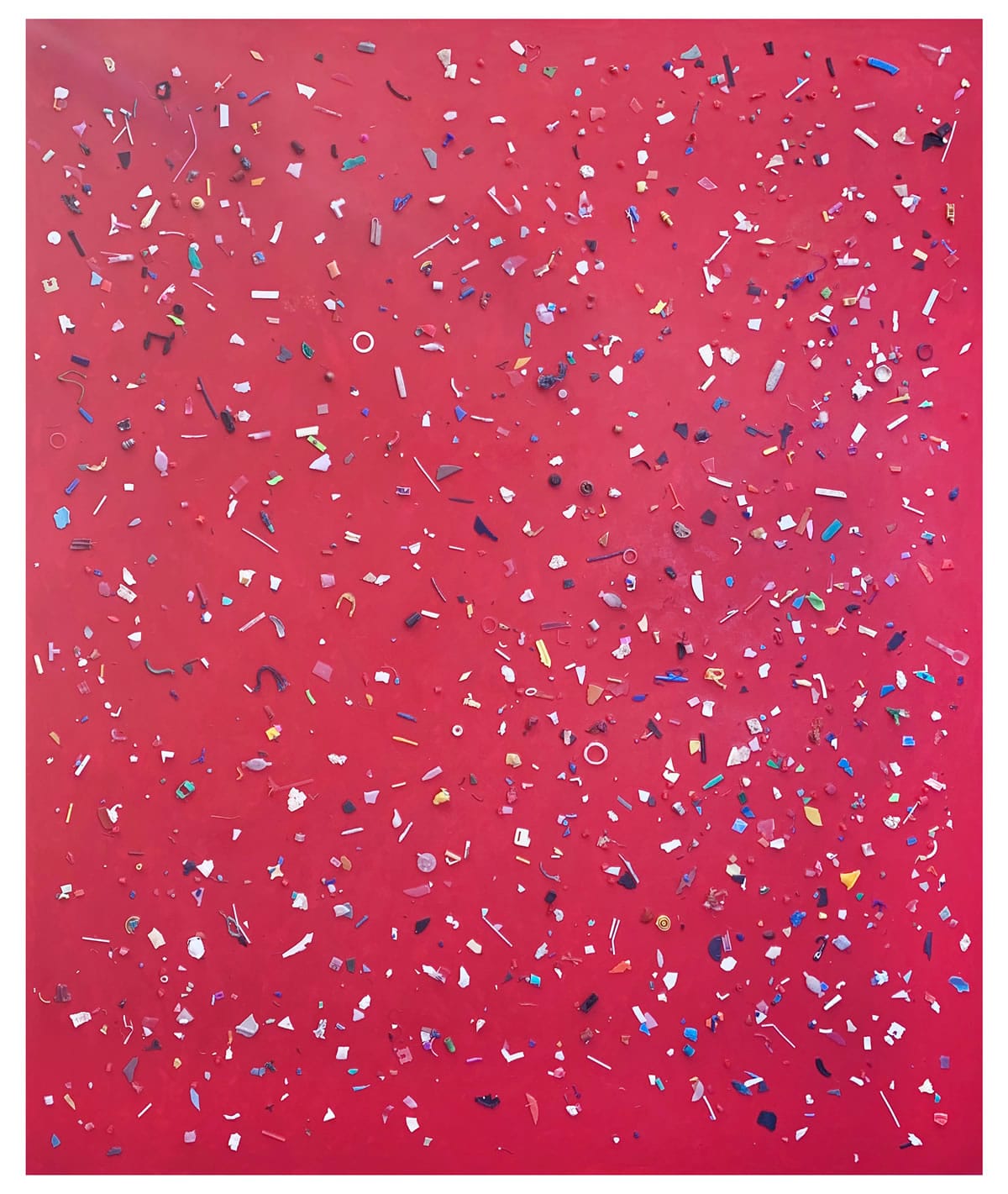
Figure 5. Dahlsen J. (2019) Interior Detail
Figure 6. Dahlsen J. (2005) Thongs
As an environmental artist, I envision the artist’s role in the fight to protect our earth and our marine life in particular, as multi-dimensional. I create art that makes a difference and has a social conscience. The assemblage artworks I have made over the years are thematically based on environmental issues, taking society’s discarded everyday objects and transforming them into formal compositions. These recycled materials have been used to convey the history and memory of a place, to comment on the human experience of place, beauty, degradation of the environment and the inspiration possible with recycling through a positive aesthetic experience.
One of my favourite series of works was my series of Totems. I researched the definition of the totem, which was a “symbol of the clan”. In the contemporary
context, our clan-like behaviour symbolized our throwaway mentality. It also symbolized an artist’s desire to make something beautiful out of something ugly.
Winning the prestigious Wynne prize at the Art Gallery of NSW in 2000 with the “Thong Totems” was a career highlight, as was being selected as a finalist in 2003 and again in 2004.
The objects yielded by the tide prompted a key question for me: how does one give form to the formlessness of detritus? I was well aware that the organising principles and my choices would determine the meaning of any work created. I began by sorting the found objects into material, natural or manufactured, then into colour and size. These categories suggested particular works: totem poles constructed from buoys or thongs, wall-based collages of driftwood, and, eventually, coloured plastics assembled into abstract fields that came to evoke semi-abstract landscapes.
Unlike most environmental artists, I make my work not from conventionally ‘natural’ materials—soil, grass, stones, for instance-but rather from the ‘artificial’ materials that nature has reclaimed and sculpted through erosion. The work that I make and exhibit, actively mobilises the unstable boundaries between what is
human-made and what is natural.
Ultimately, the work reflects on the role of the environmental artist and art practice at the end of the second decade of the 21st century. This is during a time when damage to the environment and economic choices by the government and big business continue to challenge the ideals of environmentalism. The art protests
against recklessness on the part of policymakers, while building an aesthetic appreciation of the artwork produced, contributing to new ways of seeing environmental problems.
r. John Dahlsen is a contemporary environmental artist and author whose work examines the passage of time in the landscape and the place of humankind within it by working with found objects, primarily ocean trash, to create abstract compositions. He won Australia’s oldest art award, the Wynne Prize, in 2000 at the Art Gallery of NSW and four years later his art represented Australia at the Athens Olympics. He’s also the author of An Artist’s Guide to a Successful Career and An Accidental Environmental Artist. Dahlsen currently lectures in Visual Art at the University of Canberra in partnership with TAFEQLD Southbank Brisbane campus.
To learn more about John Dahlsen, and his work as an environmental artist visit the following links.
Website: https://www.johndahlsen.com
YouTube: John Dahlsen
Facebook: JohnDahlsenArt
Instagram: johndahlsen

Celebrating Colours
Observing an artist who works closely with the community, especially the ones close to my heart is fascinating. John Dahlsen participated in the “Waste as Art” project in Bali, 2016, a project centred around collecting Ocean Litter debris in the form of plastic Styrofoam from the beaches of Sanur in Bali and making artwork from these found objects. He did this in a collaboration with students from the Indonesian Institute of Art in Denpasar. As a collaboration they created a series of Styrofoam totems. As an active participant in the community he responds directly through his art practice. This essay is the starting point of closely looking at his recent artworks using the plastic debris medium, especially from the beach.
John Dahlsen was born in Sydney in 1958 and graduated from the Victorian College of the Arts in 1979. Just to name a few awards and commendations, Dahlsen won the Wynne Prize at the Art Gallery of NSW in 2000, where he was also a finalist in 2003 and 2004, a finalist in the Sulman Award at the Art Gallery of NSW 2006 and in 2004 his art represented Australia at the Athens Olympics. Dahlsen has work displayed in major art collections and has participated in residencies both in and outside Australia, establishing his reputation as an international artist. In the academic field, Dahlsen holds a PhD from Charles Darwin University with his thesis on “Environmental art: Aesthetics, Activism and Transformation”. He also has extensive experience as a university lecturer, and has authored a number of books including “An Accidental Environmental Artist” which was published by Alpha Academic Press, US, 2013 and “An Artist’s Guide to a Successful Career”, which was published by Common Ground Publishing House in the US 2014.
His career as an environmental artist began when he was collecting driftwood from remote beaches in East Gippsland, in order to make furniture for his new home in Byron Bay. During this time Dahlsen was struck by the sheer amount of plastic debris and waste. He wasn’t intending to collect the plastic debris, but its presence became unavoidable and he ended up collecting a significant amount, – in excess of seventy jumbo garbage bags and was inspired to create artworks from the challenging material. His intuition as an artist saw beyond the plastic debris as merely disposable objects, but instead pursued when he returned to his studio, to experiment with the essence of this medium and how it could be used as art. The recycled material in turn became integral for Dahlsen in conveying the history and memory of a place, to comment on the human experience of place and the beauty and degradation of the environment. He states, “…and as I evolved as an artist, these elements have deepened… through both my studio-based work and my own research as a practising visual environmental artist”.
His artistic process currently with his latest work, includes mixing micro plastics with ecologically sustainable plant based, clear resin. He paints the plastics onto stretched Belgian linen into abstract details or the shape of the Garbage Patch in the Pacific Ocean. It’s a meeting of his past painting and his current assemblage work. In viewing Dahlsen’s recent artworks, the immediate impression one gets is of colour. The celebration of colours. There is a different colour of each background of canvases, warm blue, cherry red, yellow and white. Harmony and contrast are continuously combined creating a unique landscape. It could be said that with the new work there exists a synergy in style to Fred Williams (1927-1982) who famously had the vision to envisage the Australian landscape in abstract painting. Both artists, working in different time and place, but both sharing a similar sociocultural heritage. Williams was also at one stage one of John’s lecturers in drawing at the VCA.
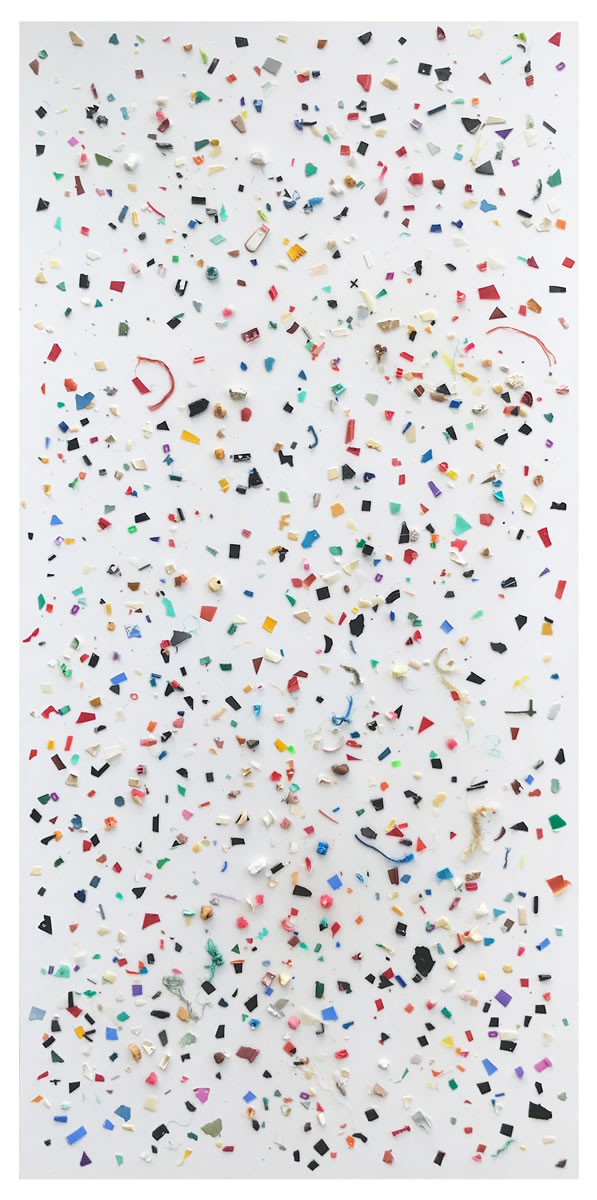
John Dahlsen
Title: Beach Detail 6
Materials: Found plastics,
resin (sustainable plant based).
primed Belgian Linen
Size: 208cm x 99cm Date: 2018
In Hillside III (1968), this style of mark making is applied without the presence of a horizon line. Curator of Australian Art at the National Gallery of Australia (NGA) Deborah Hart suggested in 2011’s Fred Williams: Infinite Horizons that “Williams’ special talent was abstracting from the real or, as he put it, seeing the world ‘in terms of paint’”. The result is a distilled landscape with no specific point of focus that encourages the viewer to scan across the entire surface of the canvas.
Retrieved 2nd July 2020 from: https://art150.unimelb.edu.au/articles/presence
The most significant feature of Williams work was a rough dot technique to depict the landscapes. The aerial portraits of landscapes show the capacity of his genius translation to the landscape that surrounds him. Dahlsen has the same spontaneity to determine no specific point of focus which in turn encourages the viewer to scan across the entire surface of the canvas and spark an inner dialogue within themselves about the painting.
Investigating Dahlsen’s latest works of “Gyre Studies” also reminded me of the Indonesian artist, I Made Wianta (b.1949) and in particular his early works. Recognised as an International artist, Wianta’s work constantly recombines an expanding corpus of shapes, masses and colours. His compositions consist mostly of studies in the variation between foreground and background through combinations of objects, component units, and colours. His Balinese roots cannot be completely separated from Wianta’s works, even though his influences of Western cultures are very significant in his creative journey. Wianta’s diverse influences can be attributed to his time at Yogyakarta before finishing his studies at The Academy of Fine Art in Europe during the seventies, both worlds opening new
horizons in his creative process (further reading, Jean Couteau: Made Wianta, CV Buratwangi, 1990)
Where Wianta and Dahlsen share similarities is in the way they respond the landscape, as the space begins to open up both artists play with colours, repetition and detail to create the whole, both also working on a similar background palette. Wianta is interested in the use of dots and fine lines, whilst Dahlsen is more focussed on the arrangement of the different materials, both artists utilising composition in creating harmony.
The works below by Wianta integrated dots and unique shapes as decorative elements, whilst inviting viewers to look closely and try to determine a from detail, to investigate the creative process and discover hidden elements of their personality. There also lies synergy between Wianta and Dahlsen, both unconsciously sharing similar concepts and processes in how they express their minds on canvas.
John Dahlsen
Title: Styrofoam Totems
Materials: Styrofoam, stainless Steel and Steel
12 totems 180cm – 220cm (Variable Sizes)
Date: 2011
Collection: Commonwealth Bank Australia

Left: John Dahlsen
Title: 7 Brown Totems
Materials: Plastic foam, Stainless steel, steel
Size:85cm – 100cm x 20cm each x 7 totems
Date: 2001
Looking closely at the series title, “Gyre Studies”, a highly methodical and meticulous approach immediately presents itself to the observer. Great care has been placed in the arrangement of the tiniest specks of plastic debris, each piece holding its form regardless of the shape and scale. From afar such detail may be Ost as one observers an arrangement of tiny dots that form a whole, which Dahlsen configures with black charcoal and plant based clear resin.
Artistic creativity is important for Dahlsen in the form of process orientation which he finds is necessary. “Gyre Studies” arranges colours harmoniously, bringing out the beauty of each object and putting debris onto a platform. Each object is saved and the once abandoned materials are given a new life as pieces of artwork. The objects speak for themselves; fingers and eye coordination become the tool and messenger of these found objects.
The process Dahlsen undertakes is often arduous, pouring all the materials he has collected onto the floor, sorting each by colour and size. During the collection of the debris he seeks the tiny pieces which people often miss when they are also picking up plastics from the beach. There is a satisfaction in this process as John states; “I will be much happier if there is no rubbish to pick up anymore, then this will begin to indicate that there are changes happening with how we are caring for the environment.”
“Gyre Studies” from 2020, are the follow up to the “Pacific Garbage Patch Studies” in 2018-2019. The exploration led to the introduction of charcoal and drawing into the process as he felt it would add another layer to the body of work as a whole and the drawing seems to highlight the random swirling notion of the ocean currents that make up the Gyres and hence the Garbage Patches.
The journey of John Dahlsen as a visual artist has evolved from painting to assemblage, sculpture and installation art, to his most recent work with new materials and mediums, that herald a meeting between his earlier painting and drawing from the 1990’s and his work from the last two decades working as an environmental artist with ocean litter. in “Gyre studies” Dahlsen uses charcoal, dry pigment and ink, familiar tools which Dahlsen has utilised from his early works on paper and canvas in the 90s. “The Dialogue” 1991, “Charcoal Peaks and Valleys”, 1991, for example, is a slow and cautious method developed over the years and a connection is easily discernible with his latest works. In these early works, shapes, layering, twirls and lines take the form of the landscape and “Gyre studies” marks both the continuation and evolution of a creative journey which Dahlsen has been dedicated to for over 30 years.
Dahlsen’s artwork presents the story of an artistic journey as an individual but more profoundly act as a voice for environmental issues, humanity and arts as a vehicle for activism. Dahlsen challenges the audience to initiate the discourse. “My art not only transforms rubbish into object of value but they also raise questions about cultural worth. What distinguishes a piece of plastic ground to crystal-like translucency by time and water, from a work of art? Can my work shift our thinking on a matter of sustainability, or is it exploitation of the earth’s resources for human consumption?”
His work in the book is a retrospective view of the past three years work, looking back at the changes and development of his visual language. Dahlsen sees his art as a potential messenger for change which may possibly bring a better world through people’s interaction with this kin of art with a social message about the environment.
Yuliana Kusumastuti is an arts writer and artist who lives in Brisbane,having moved to Australia in 1999. She holds and Honours degree from the Faculty of Lanquages and Arts, IKIP N Semarang, now Semarang University, and a Master of Arts degree from Charles Darwin University, Darwin. She trained as a journalist with LP3Y Yogyakarta, and worked at Bernas newspapers Yogyakarta.
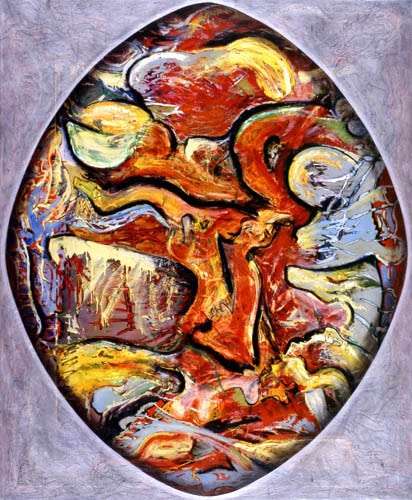
John Dahlsen
Title: Fire Shield
Materials: Oil, charcoal wax
and varnish on Belgian linen
Size: 260cm x 213cm
Date: 1991

John Dahlsen
Title: Opal Shield
Materials: Oil, wax, charcoal
and varnish on Belgian linen
|Size: 273cm x 206cm
Date: 1991
Artist Statement 2019
I have actively harvested from ‘nature’ the many- times-removed products of human manufacture: the raw material extracted from the earth, processed into commodity, used, discarded, and returned by the tide to human use.
The objects yielded by the tide prompted a key question for me: how does one give form to the formlessness of detritus? I was well aware that the organising principles and my choices would determine the meaning of any work created. I began by sorting the found objects into material, natural or manufactured, then into colour and size, this process a self-reflexive examination of categorization. These categories suggested particular works: totem poles constructed from buoys or thongs, wall-based collages of driftwood, and, eventually, coloured plastics assembled into abstract fields that came to evoke
landscapes. Unlike most environmental artists, I make my work not from conventionally ‘natural’ materials — soil, grass, stones, for instance — but rather from the ‘artificial’ materials that nature has reclaimed and sculpted through erosion. My work actively mobilises the unstable boundaries between what is human-made and what is natural.
These works not only transform rubbish into objects of value, raising questions about the assignation of cultural worth. They also compel the viewer to make links between the cycles of production and use of everyday functional objects, and those of art. What distinguishes a piece of plastic ground to crystal-like translucency by time and water, from a work of art?
Can art shift our thinking on matters of sustainability, or is it complicit in the exploitation of the earth’s resources for human consumption?
Dr. John Dahlsen
Short Biography:
Dr. John Dahlsen is a contemporary environmental artist and author who studied at the Victorian College of the Arts. He won Australia’s oldest art award, the Wynne Prize, at the Art Gallery of NSW in 2000 and was again a finalist in 2003 and 2004. In 2006 he was a finalist in the Sulman Award at the Art Gallery of NSW and has won other numerous awards. In 2004 his art represented Australia at the Athens Olympics.
He exhibits and is represented in major public and private collections in Australia and internationally. In 2014 John was awarded a Churchill Fellowship and travelled to Japan in January 2015 to work for 5 weeks with a master woodblock printer and created a limited edition series of 24 woodblock/digital fusion prints. He then went to Amsterdam and researched how van Gogh was influenced by Japanese woodblock prints.
John is a published author: “An Artist’s Guide to a Successful Career” was published by Common Ground Publishing in the US in December 2013. His book “An Accidental Environmental Artist” was
published in 2014 by the US publisher: Alpha Academic Press in the US. In April 2016 his book chapterwas published in the book Global South Ethnographies: Minding the Senses. He has written a number of published journal articles.
From 2014-2016 John lectured in art at Charles Darwin University in the Northern Territory, where he also completed his PhD, which was titled: Environmental art: Aesthetics, Activism and Transformation.
In 2016 John had four international exhibitions including solo shows in Indonesia and China and two group shows in the USA in Denver and LA.
In 2017 he exhibited in US in the 2017 Georgetown University Washington, DC USA: Art For Ocean
Conservation Exhibition: Third Annual Sustainable Ocean Summit. Sustainable Oceans Alliance (SOA) Georgetown Chapter On Earth Day, April 22, 2017.
His environmental art examines the passage of time in the landscape and the place of humankind within
it. He currently convenes the Honours programme and lectures in Visual Art at the University of Canberra Southbank in partnership with TAFE QLD Brisbane campus.
New work 2018-2019:
The artworks from 2018-2019 are based on the current mapping of the Garbage Patch in the Pacific Ocean and on detail studies of beach plastics. The works on Belgian linen and canvas are made from found plastics collected from Australia’s coastline and ecologically sustainable plant based resin. Some works from this series also have ink, acrylic, charcoal and or chalk. Thematically based on environmental issues, taking society’s discarded everyday objects and transforming them into formal compositions. These recycled materials have been used to convey the history and memory of a place, to comment on the human experience of place, beauty, degradation of the environment and the inspiration possible with recycling through a positive aesthetic experience.
John Dahlsen 2020.
New Work
Beach Detail 1
Found plastics, resin (sustainable plant based), Belgian linen 183cm x 183cm 2018
Beach Detail 2
Found plastics, oil, resin (sustainable plant based), primed Belgian linen 183cm x 183cm 2019
Beach Detail 3
Found plastics, resin (sustainable plant based), ink, Belgian linen 183cm x 183cm 2018
Beach Detail 4
Found plastics, resin (sustainable plant based), ink, Belgian linen 183cm x 183cm 2019
Beach Detail 5
Found plastics, resin (sustainable plant based), ink, Belgian linen 183cm x 183cm 2018
Beach Detail 6
Found plastics, resin (sustainable plant based), primed Belgian linen 208cm x 99cm 2018
Beach Detail 7
Found plastics, resin (sustainable plant based), Belgian linen 200cm x 100cm 2018
Beach Detail 8
Found plastics, resin (sustainable plant based), Belgian linen 200cm x 200cm 2018
Beach Detail 9
Found plastics, resin (sustainable plant based), acrylic, Belgian linen 200cm x 100cm 2018
Interior Detail #1
Found plastics, resin (sustainable plant based), acrylic, Belgian linen 198 cm h x 165 cm w 2019
Pacific Garbage Patch Series
Pacific Garbage Patch #1
Found plastics, resin (sustainable plant based) chalk, Belgian linen 183cm x 183cm 2018
Pacific Garbage Patch #2
Found plastics, resin (sustainable plant based), ink, chalk, Belgian linen 183cm x 183cm 2018
Pacific Garbage Patch #3
Materials: Found plastics, resin (sustainable plant based), ink, chalk, Belgian linen 200cm x 200cm 2018
Pacific Garbage Patch #4
Found plastics, resin (sustainable plant based), ink, chalk, Belgian linen 183cm x 183cm 2018
Pacific Garbage Patch #5
Found plastics, resin (sustainable plant based), chalk, primed Belgian linen 183cm x 183cm2018
Pacific Garbage Patch #6
Found plastics, resin (sustainable plant based), chalk, primed Belgian linen 183cm x 183cm 2018
Pacific Garbage Patch Study Series
Pacific Garbage Patch
Found plastics, resin (sustainable plant based), primed Belgian linen 30cm x 30cm 2018
Pacific Garbage Patch Study #2
Found plastics, resin (sustainable plant based), Belgian linen 30cm x 30cm 2018
Pacific Garbage Patch Study #3
Found plastics, resin (sustainable plant based), Belgian linen 30cm x 30cm 2018
Pacific Garbage Patch Study #4
Found plastics, resin (sustainable plant based), Belgian linen 30cm x 30cm 2018
Pacific Garbage Patch Study #5
Found plastics, resin (sustainable plant based), Belgian linen 30cm x 30cm 2018
Pacific Garbage Patch Study #6
Found plastics, resin (sustainable plant based), Belgian linen 30cm x 30cm 2018
Pacific Garbage Patch Study #7
Found plastics, resin (sustainable plant based), primed Belgian linen 30cm x 30cm 2018
Pacific Garbage Patch Study #8
Found plastics, resin (sustainable plant based), primed Belgian linen 30cm x 30cm 2018
Pacific Garbage Patch Study #9
Materials: Found plastics, resin (sustainable plant based), primed Belgian linen 30cm x 30cm 2018
Pacific Garbage Patch Study #10
Materials: Found plastics, resin (sustainable plant based), ink, Belgian linen 30cm x 30cm 2018
Pacific Garbage Patch Study #11
Materials: Found plastics, resin (sustainable plant based), ink, Belgian linen 30cm x 30cm 2018
Pacific Garbage Patch Study #12
Materials: Found plastics, resin (sustainable plant based), ink, Belgian linen 30cm x 30cm 2018
Pacific Garbage Patch Study #13
Materials: Found plastics, resin (sustainable plant based), acrylic, canvas 30cm x 30cm 2018
Pacific Garbage Patch Study #14
Materials: Found plastics, resin (sustainable plant based), acrylic, canvas 30cm x 30cm 2018
Pacific Garbage Patch Study #15
Materials: Found plastics, resin (sustainable plant based), acrylic, canvas 30cm x 30cm 2018
Biography: John Dahlsen
“As a leading environmental artist and author, Dr. John Dahlsen is committed to engaging audiences on important social and environmental issues with his unique sense of aesthetics. His most recent body of work highlights the issue of plastic ocean litter. His environmental artwork include large sculptures made from found plastics encased in clear acrylic, woodblock and digital fusion prints on Japanese ‘Washi’ paper and large-scale paintings on canvas. The most recent works on Belgian linen and canvas are made from found plastics collected from Australia’s coastline and ecologically sustainable plant based resin.
John studied at the Victorian College of the Arts. He won Australia’s oldest art award, the Wynne Prize, at the Art Gallery of NSW in 2000 and was again a finalist in 2003 and 2004. In 2006 he was a finalist in the Sulman Award at the Art Gallery of NSW and has won other numerous awards. In 2004 his art represented Australia at the Athens Olympics.
He exhibits and is represented in major public and private collections in Australia and internationally. In 2014 John was awarded a Churchill Fellowship and travelled to Japan in January 2015 to work for 5 weeks with a master woodblock printer and created a limited edition series of 24 woodblock/digital fusion prints. He then went to Amsterdam and researched how van Gogh was influenced by Japanese woodblock prints.
John is a published author: “An Artist’s Guide to a Successful Career” was published by Common Ground Publishing in the US in December 2013. His book “An Accidental Environmental Artist” was published in 2014 by the US publisher: Alpha Academic Press in the US. In April 2016 his book chapter was published in the book Global South Ethnographies: Minding the Senses. He has written a number of published journal articles.
From 2014-2016 John lectured in art at Charles Darwin University in the Northern Territory, where he also completed his PhD, which was titled: Environmental art: Aesthetics, Activism and Transformation.
In 2016, John had four international exhibitions including solo shows in Indonesia and China and two group shows in the USA in Denver and LA.
In 2017 he exhibited in US in the 2017 Georgetown University Washington, DC USA: Art For Ocean Conservation Exhibition: Third Annual Sustainable Ocean Summit. Sustainable Oceans Alliance (SOA) Georgetown Chapter On Earth Day, April 22, 2017.
In 2018 John exhibited alongside the Cape York Pormpuraaw Indigenous artists, in Feb/March at UPG in Woolloongabba, The exhibition titled “Plastics Washed Ashore” highlighted ghost net art and beach found plastic art.
In June 2018 John was a key member of the Australian Consulate-General’s Waste to Wealth initiative in Indonesia. He worked together in collaboration with students from the Indonesian Institute for the Arts to create a large installation “Waste to Art” made from Styrofoam collected from the beaches in Bali. This artwork has since been gifted to ICI for their permanent exhibition collection. He then went on to address two symposiums in both Seminak at the Alila and in Lombok at the University of Mataram. In 2018 he was also a finalist in the inaugural BAM Art Award.
His environmental art examines the passage of time in the landscape and the place of humankind within it. He currently coordinates the post-graduate program and lectures in Visual Art for the higher education degree course at the University of Canberra/TAFE Southbank Brisbane campus.
He exhibited in Brisbane from February – May 2019 and in Sydney during April 2019.
John was shortlisted as a finalist in the 2019 “Now” contemporary art award at the Shoalhaven Regional Art Gallery.
The Gyre Studies 2020
“Gyre Studies” Found micro plastics, sustainable plant based resin, charcoal, gesso and varnish on Belgian linen. 30 x 30 cm 2020
“Gyre Study 6” Found micro plastics, sustainable plant based resin, ink, charcoal, gesso and varnish on Belgian linen. 30 x 30 cm 2020
“Gyre Study 7” Found micro plastics, sustainable plant based resin, ink, charcoal, gesso and varnish on Belgian linen. 30 x 30 cm 2020
“Gyre Studies” Found micro plastics, sustainable plant based resin, ink, charcoal, gesso and varnish on Belgian linen. 30 x 30 cm 2020



